Sea of Japan Coastlines: Exploring Daisen-Oki National Park
Japan is a country of islands. The ocean is ever present here. It shapes the landscapes, ways of life, and the even culture of Japan itself.
Of Japan's many national parks, Daisen-Oki National Park showcases the sea and its influence on both the land and its people in a uniquely vibrant way.
The park is spread across three prefectures and encompasses a huge range of landscapes, from the massive Mt. Daisen to the rocky coastline of the Shimane Peninsula to the remote and enchanting Oki Islands located roughly 50 kilometers off the coast in the Sea of Japan. Within its boundaries are also some of Japan's most influential religious sites, including the Izumo Grand Shrine, considered one of Shinto's most sacred.
On this trip, I decided to get off the beaten path and explore some of this place's fascinating less-traveled corners.
Day 1: Miho Shrine and Kaka no Kukedo Coast
My time was short on this two-day trip, so I broke it into two parts: one day exploring the eastern half of the peaceful Shimane Peninsula, and one day on Nishinoshima, one of the Oki Islands' most captivatingly beautiful islands.
To get around quickly, I used a rental cars on this trip. While public transportation and taxis can get you to most of the places I visited, bus frequency and timing can be very limiting and you will need much more time. I especially recommend using a car on Nishinoshima Island to maximize the places you can visit.
The night before my trip, I stayed in the port town of Sakaiminato in Tottori Prefecture. Sakaiminato is a small but lively town bustling with seafood restaurants, friendly people, and a great deal of pride for one Mizuki Shigeru, whose famous manga featuring mischievous yokai (demons) is tributed through 177 yokai bronze statues lining a main road through town. Sakaiminato makes a perfect hub for trips around Daisen-Oki.
I started my first day early, crossing over the Sakai Strait and onto the Shimane Peninsula heading for my first destination: the town of Mihonoseki.

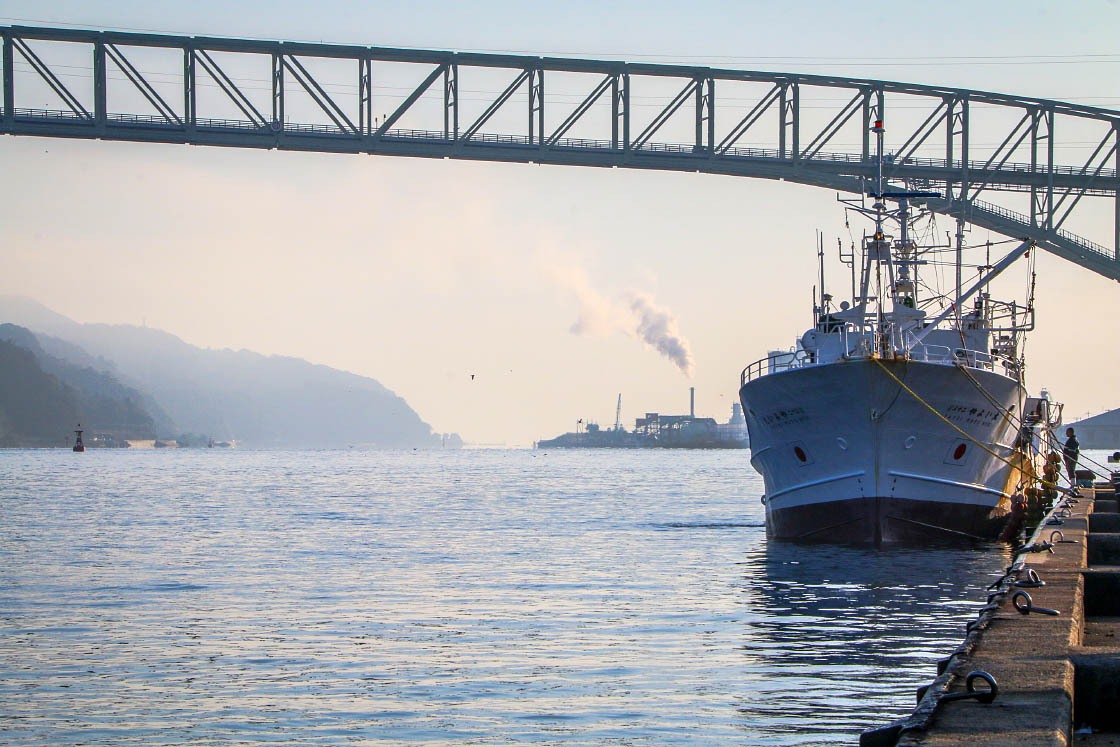
Mihonoseki is a small fishing village tucked away amongst the hilly eastern portion of the Shimane Peninsula. The old town has a proud history connected to the sea that is apparent the moment I arrived at its small boat-filled harbor.
Just over a hundred years ago, the famous Greek-born writer Lafcadio Hearn turned naturalized Japanese citizen described Mihonoseki as a raucous port where sailors, gamblers, drinkers and even geisha once crowded the streets as the shipping and fishing business boomed.


Once in town, I went straight away to my first stop for the day, Miho Shrine. Like some of its distinguished neighbors, Miho Shrine has become one of Japan's most important. A testament to the town's history, Miho Shrine enshrines none other than Kotoshironushi, more commonly known as Ebisu, and is in fact the head shrine of over 3000 shrines to Ebisu in Japan.
Ebisu, one of the Seven Gods of Fortune (maybe best known internationally for his likeness appearing on cans of Yebisu Beer), is often portrayed laughing and carrying a fish and is a god of fishermen, merchants and musicians.
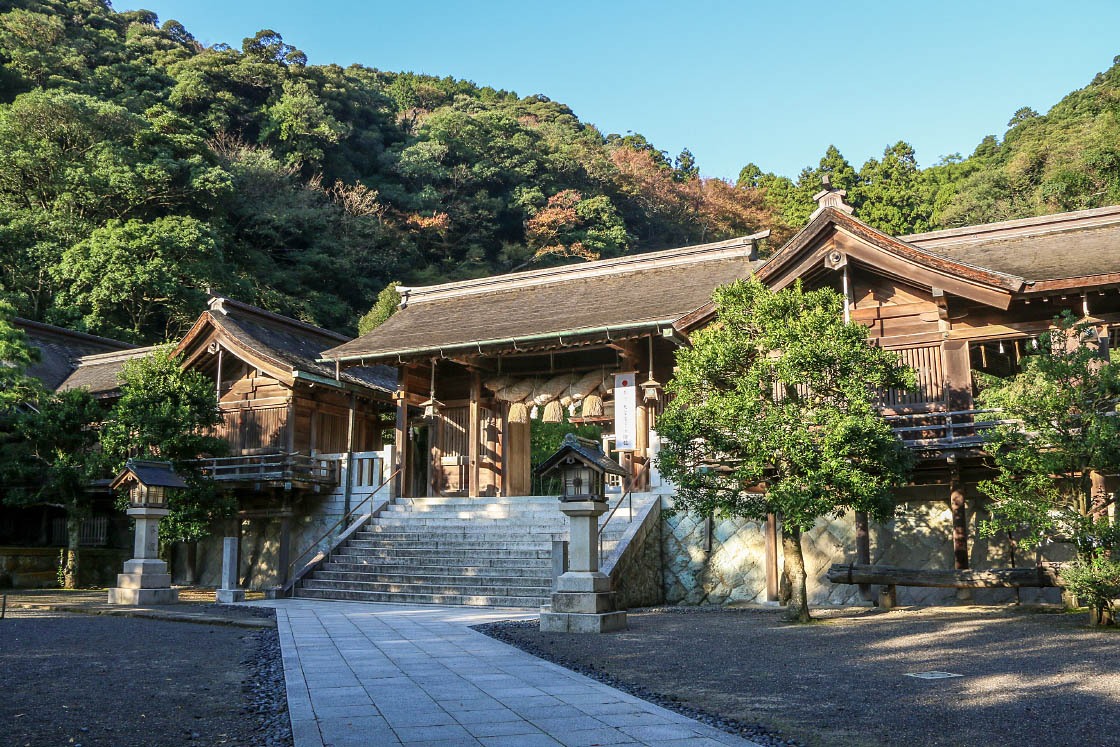
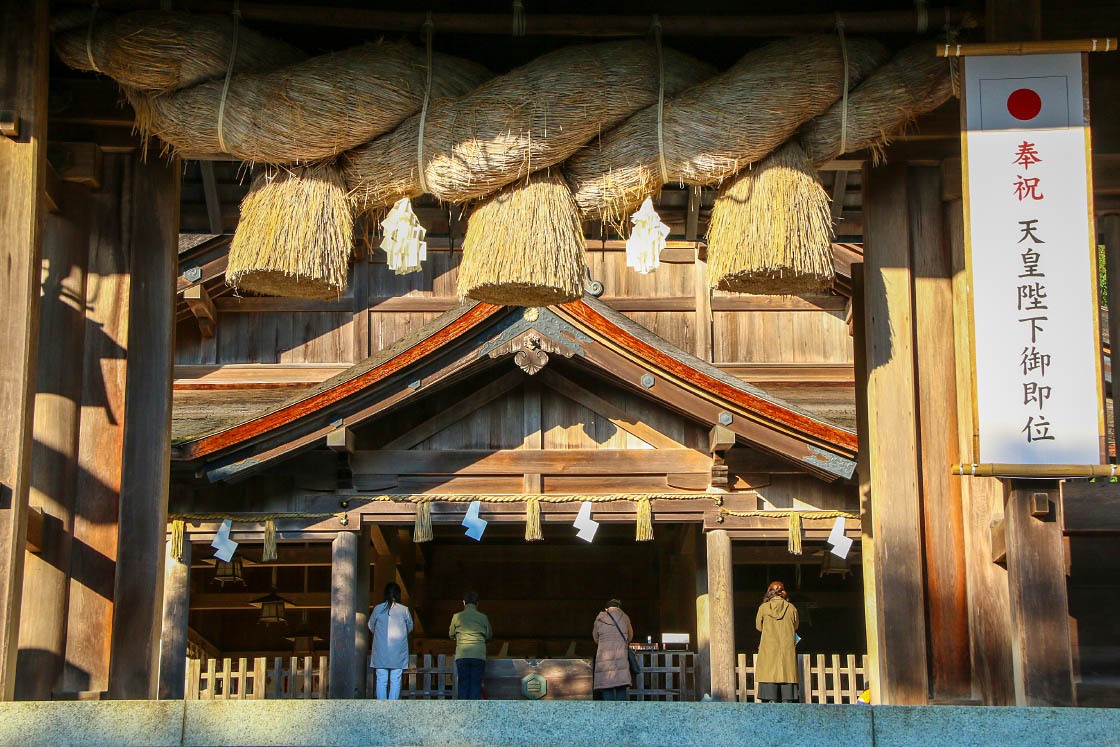
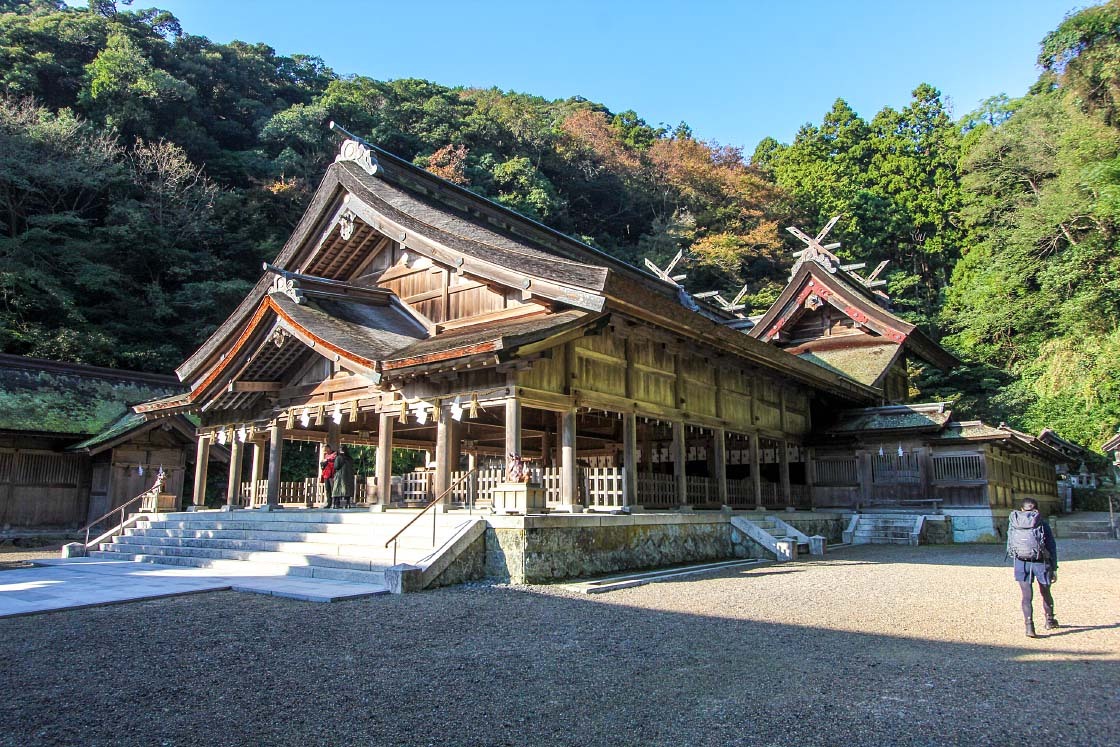
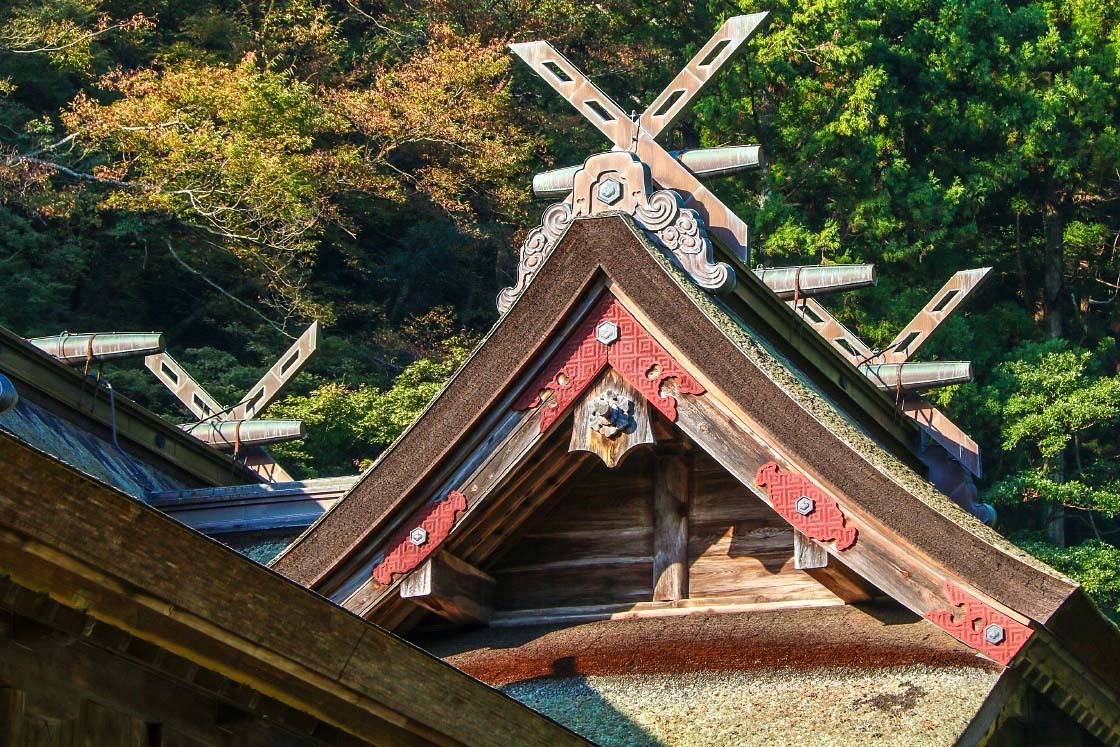
The reason I got here early in the morning, though, was to make sure I didn't miss one of two daily rituals held at 8:30 A.M. and 15:30 P.M. These ceremonies, known as Asamike-sai and Yumike-sai respectively, are both rituals of offering to the gods enshrined here and have been performed every day for hundreds of years.
The ceremony begins as Shinto priests in full garb chant droning otherworldly rites calling upon the enshrined deities. Then, musicians play taiko drums and flutes as a shrine maiden in a unique gown dances and holds sacred objects which she uses to bless other participants.
Visitors can join the ceremony and receive blessings by registering in advance, or may simply watch the ceremony from outside the inner shrine's stage.

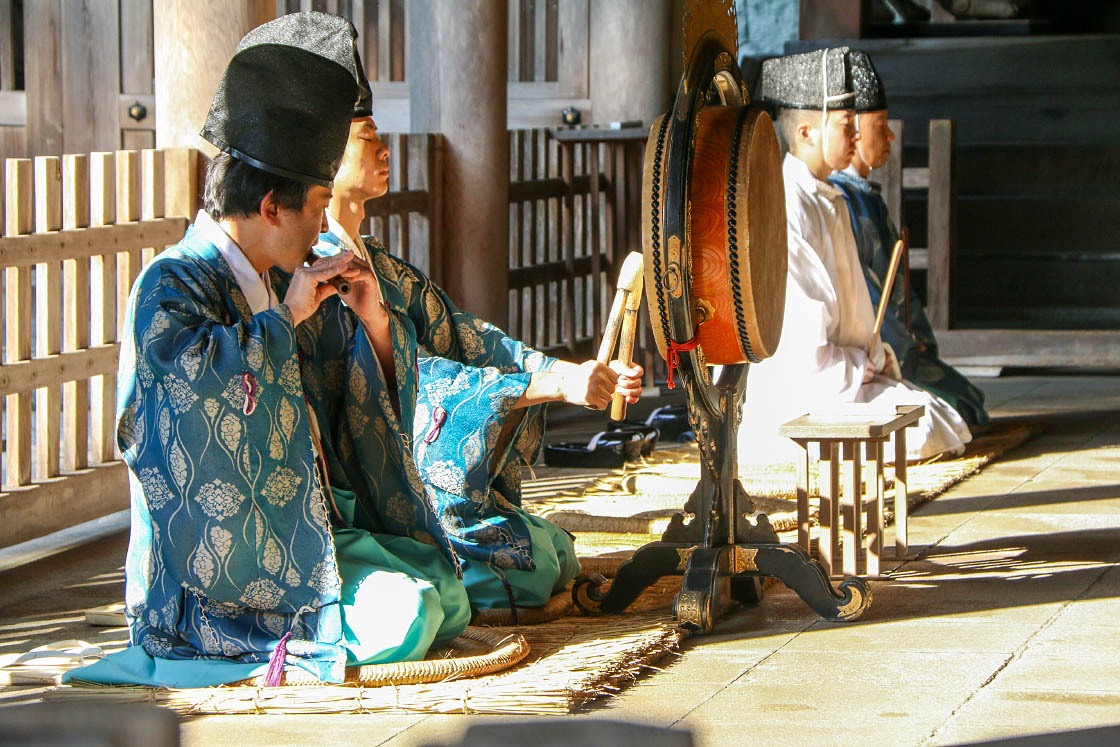
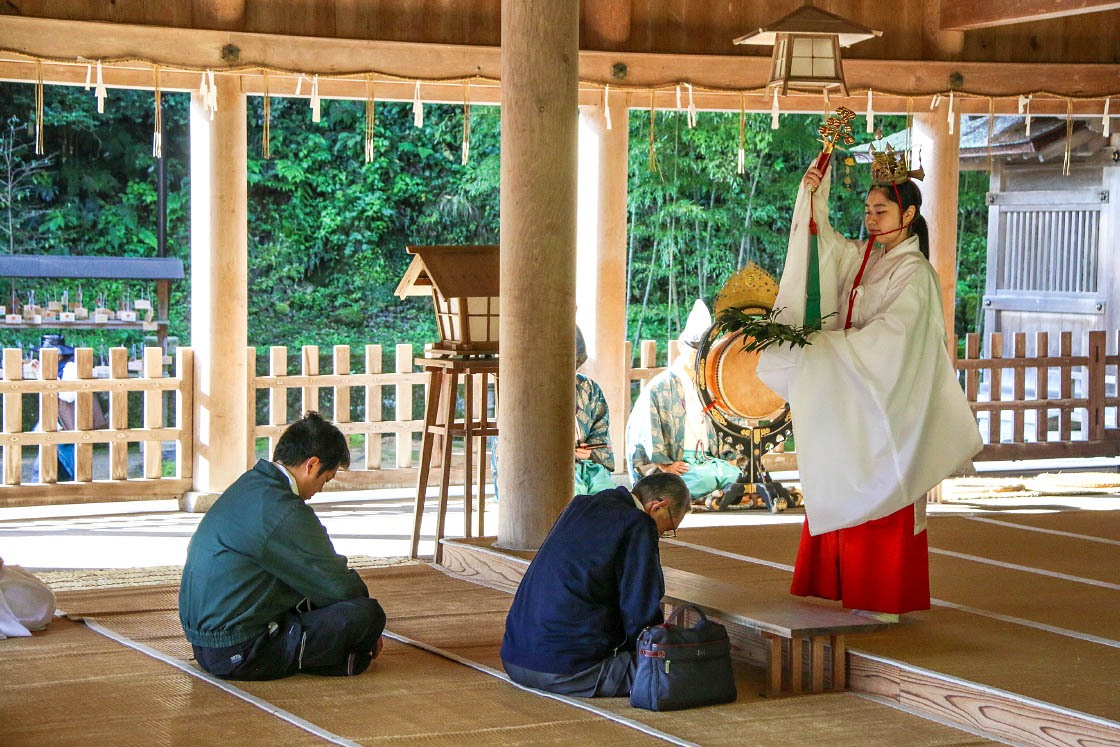
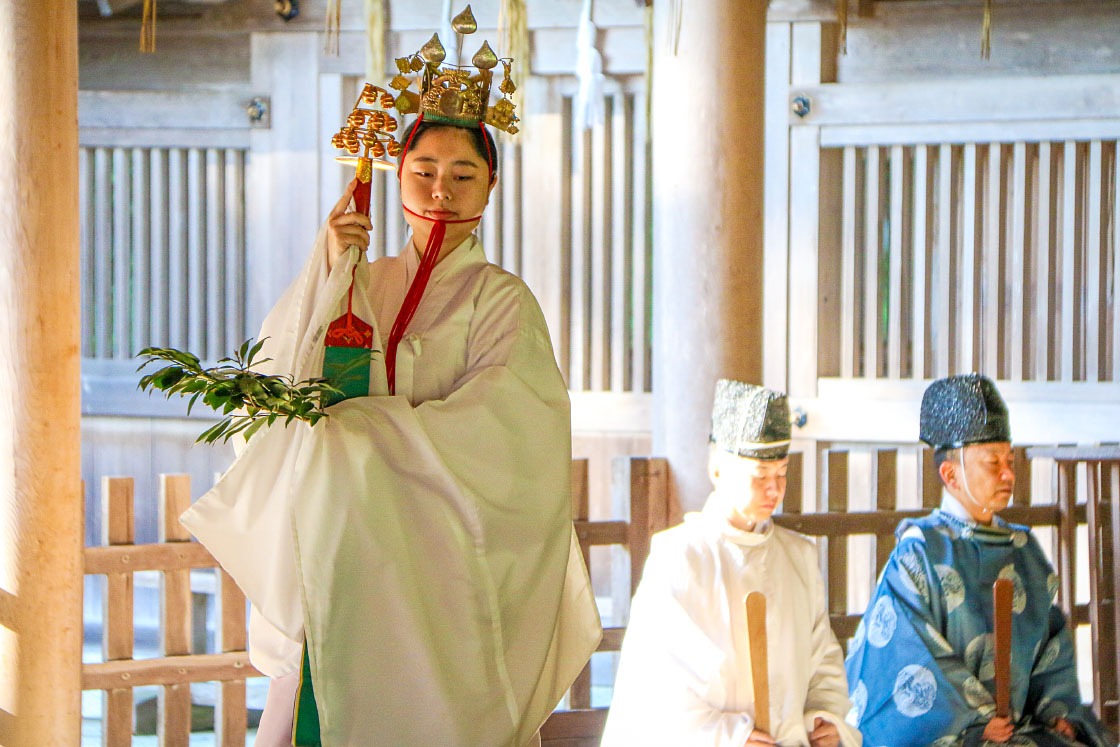
After admiring the captivating ceremony, I decided to explore the town a little before moving on. Just beside the shrine I noticed a conspicuously ornate gate at the entrance of a narrow alley. Named for its blue tinted cobblestones, Aoishidatami Street is a nostalgic pedestrian lane lined with old wooden buildings stretching between Miho Shrine and Bukkoku Temple.
It wasn't hard to imagine this street bustling at night with loud sailors finding their way to their favorite izakaya, or geisha elegantly strolling past. Today, several old shops and ryokan inns are still in business keeping their town's stories alive.
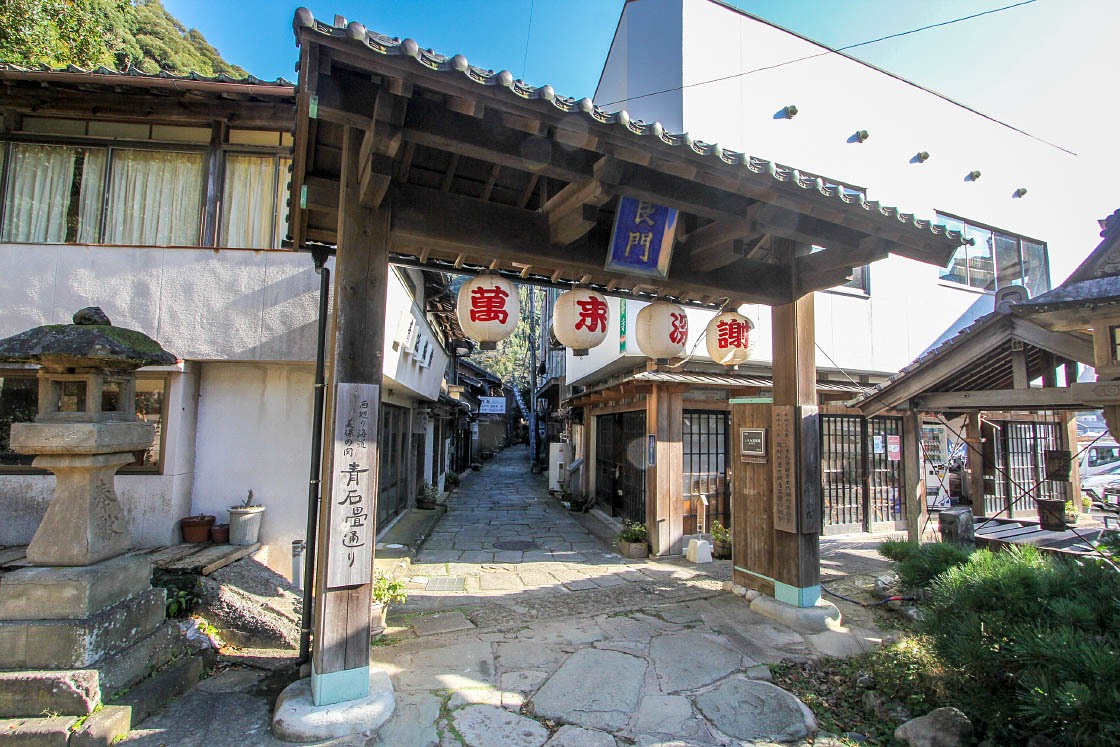
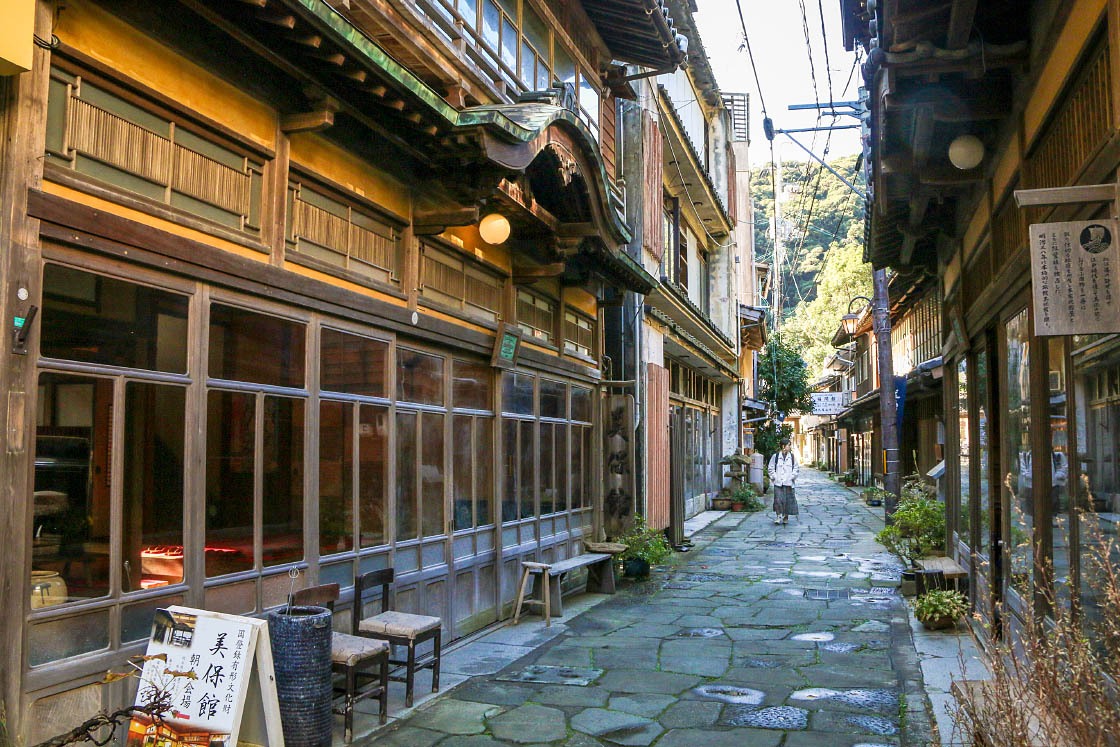
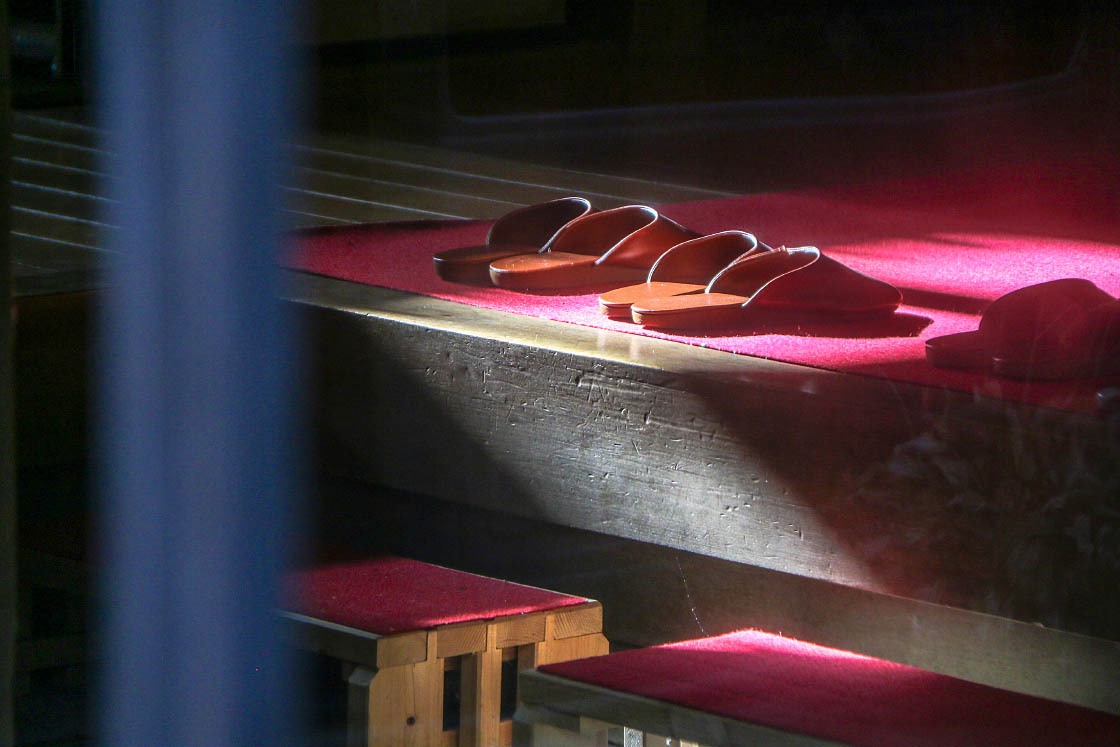
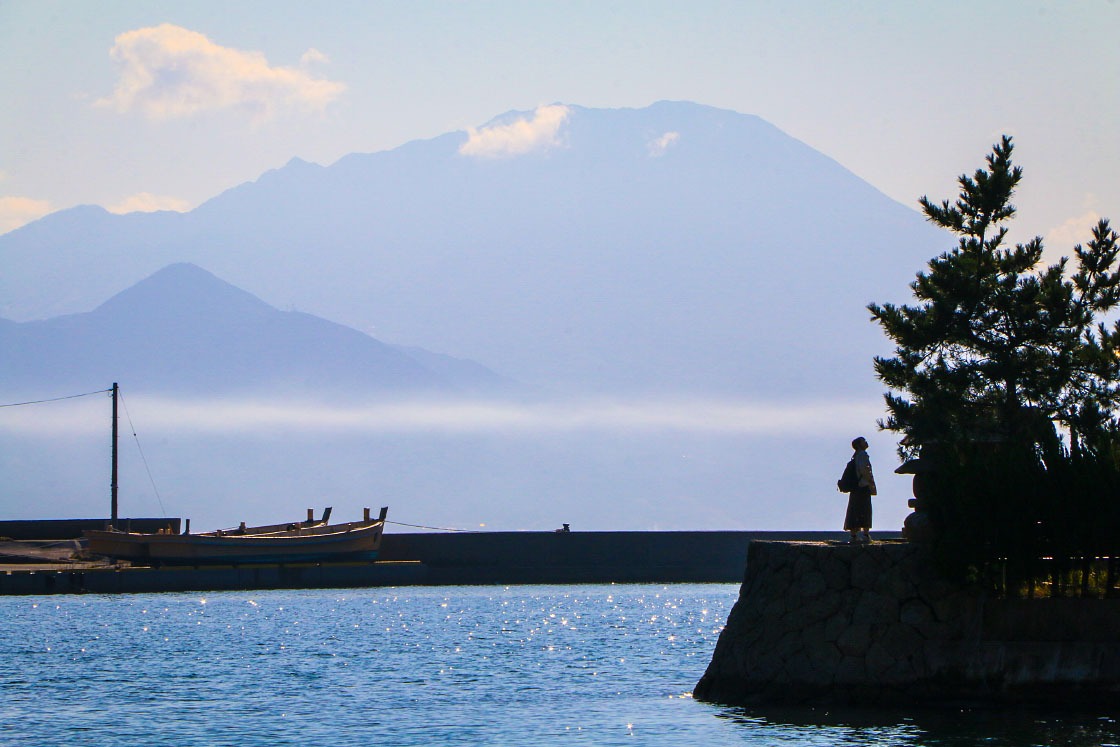
From Mihonoseki, I hopped back in my car and headed west along the seaside road hugging the north coast of the peninsula. The rocky coastal scenery and vast blue ocean at my side were picturesque in the morning light.
Less than an hour later, I was again standing at a dock, but in a decidedly more modern setting. While nice from land, many parts of the north coast here are best appreciated by boat, especially in the Kaka no Kukedo area.
After a quick look around the boat terminal's geology and history museum, I boarded a sightseeing boat bound for a 50-minute cruise around the Kaka no Kukedo area. Of particular interest were the pretty stratified rock layers forming parts of the coast as well as two large sea caves which the boat explored up close.




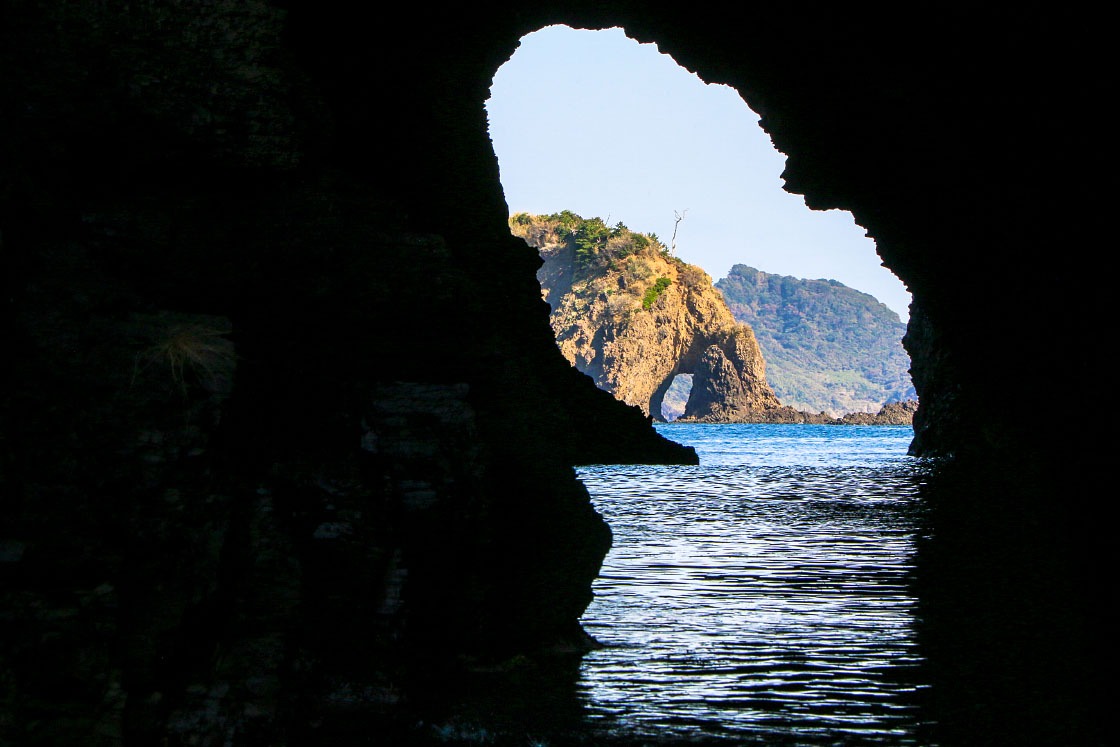
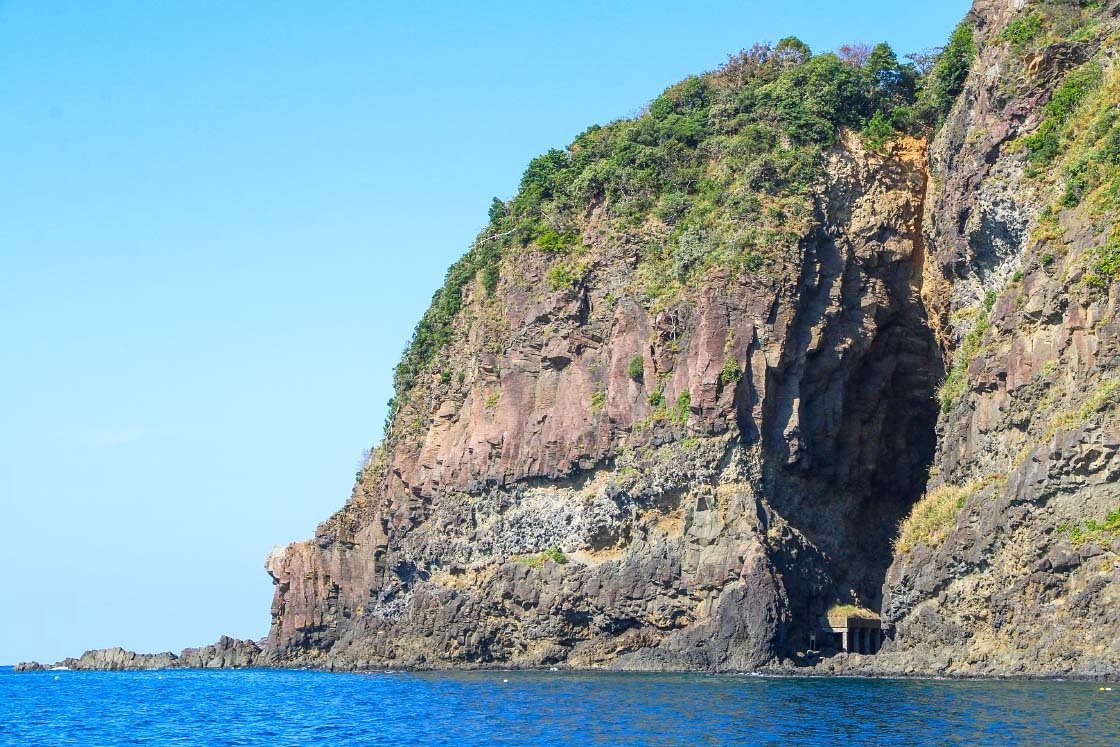
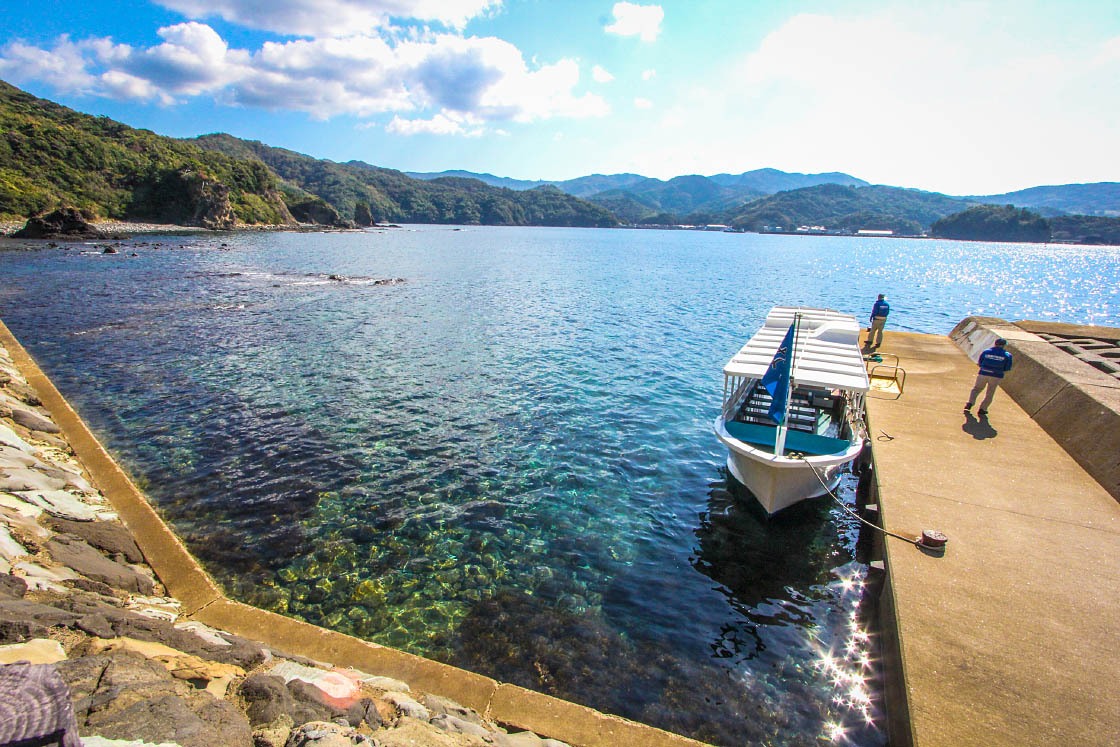
The sightseeing boat made one stop during the tour, docking briefly so passengers could get out and walk around. This stop was in front of Kyu-Kukedo cave. This tall, dark opening in the earth has been nicknamed Sai no Kawara by locals.
Sai no Kawara, in Japanese legend, is the name of a purgatory-like riverbank in the underworld where children who have died prematurely are sent. In order to move beyond the river of the underworld, these children are tasked with stacking towers of rocks to escape and console their parents, even as demons continually knock them down.
A Buddhist deity called Jizo is often called upon to look after these poor souls, as well as their parents. The Jizo statues in this cave had laid at their feet many offerings and objects that likely once belonged to a grieving parent's child. It was a solemn and quiet place.
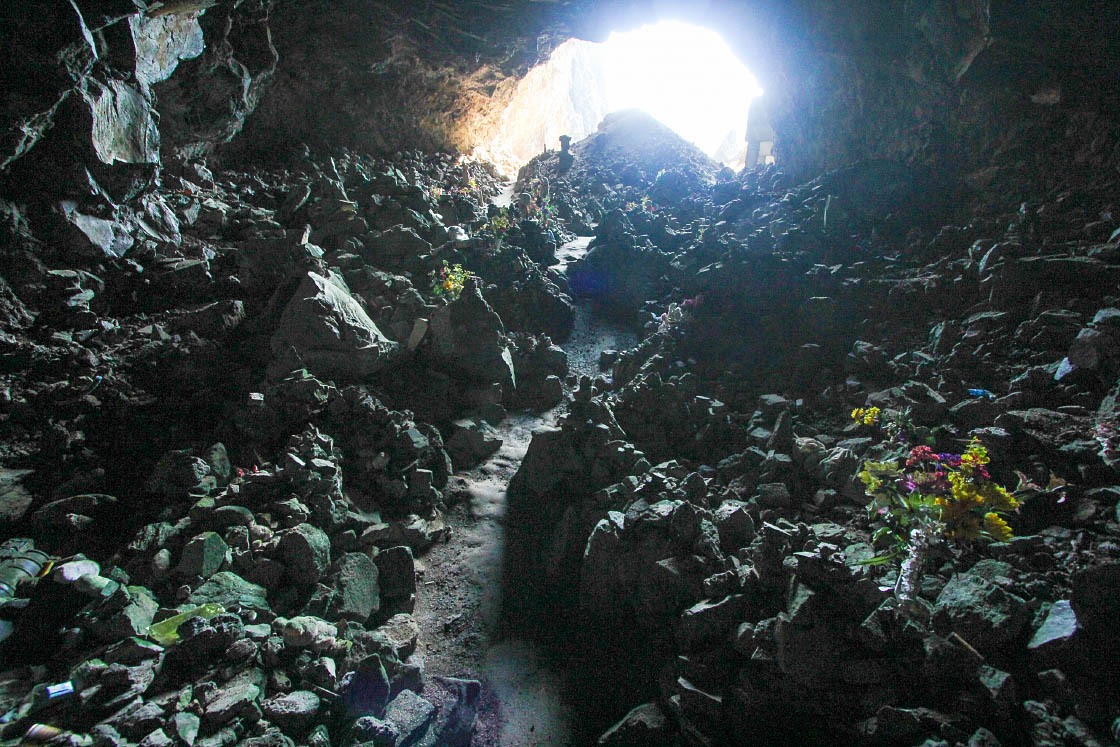
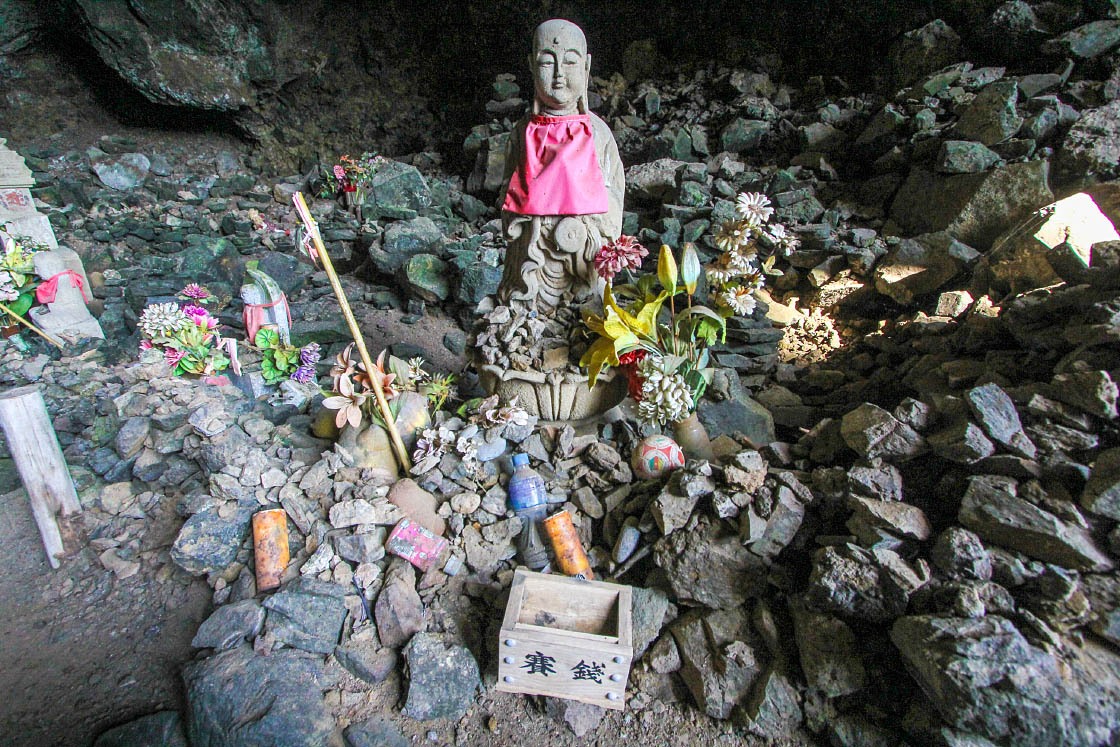
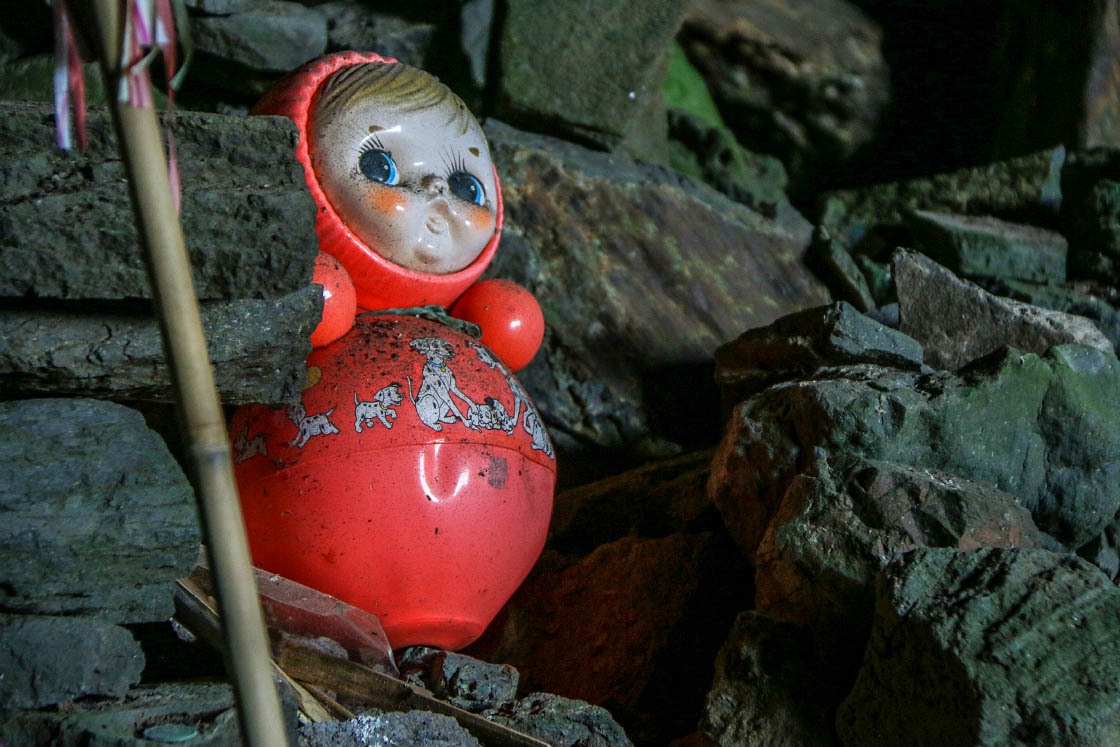
After my cruise (and lunch at a nearby diner), I had time for one more stop on the peninsula. About a 30-minute drive away is Kezoji Temple, located on one of the tallest mountaintops on the peninsula. This out-of-the-way temple stands in a forest on the mountain top at the end of a short steep hike.
From the temple grounds, a small lookout offers stunning views of the entire landscape to the south, overlooking the inland Lake Nakaumi, Sakaiminato and the towering Mt. Daisen in the distance.
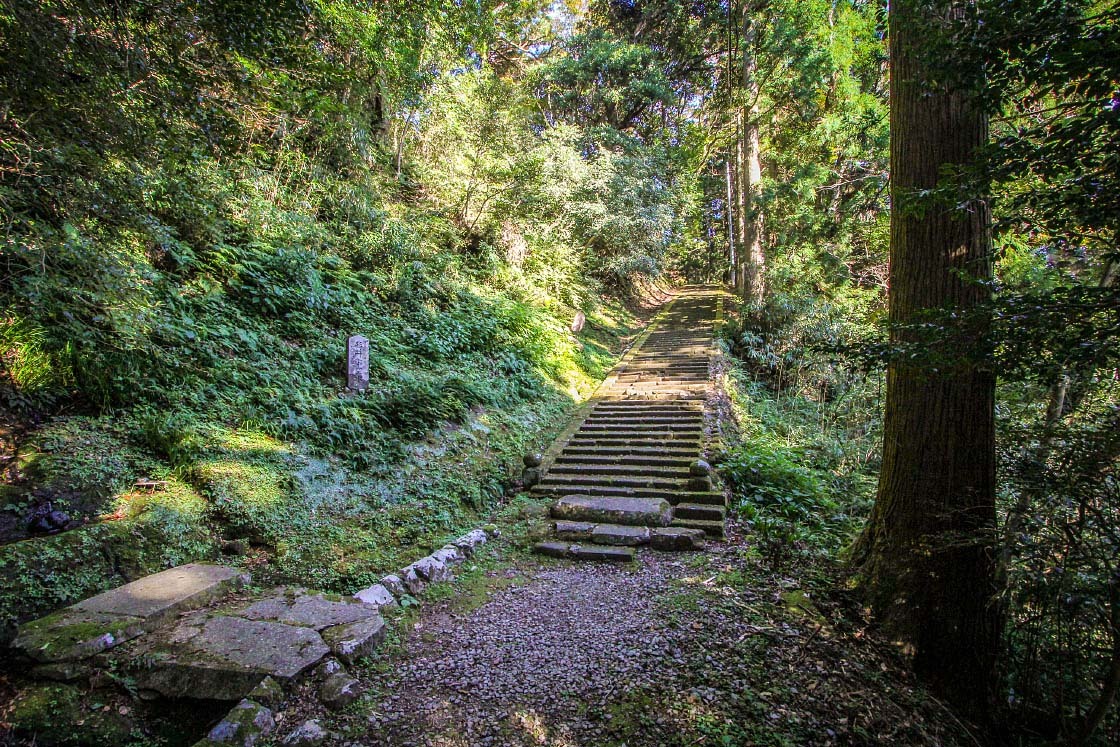
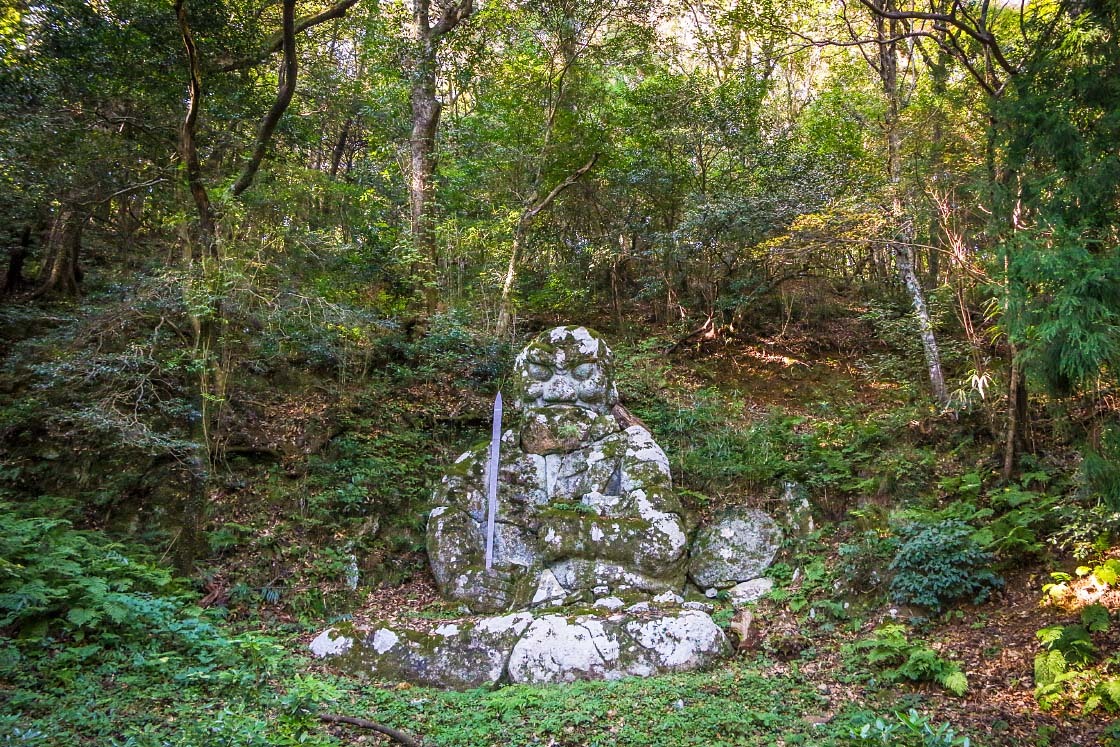

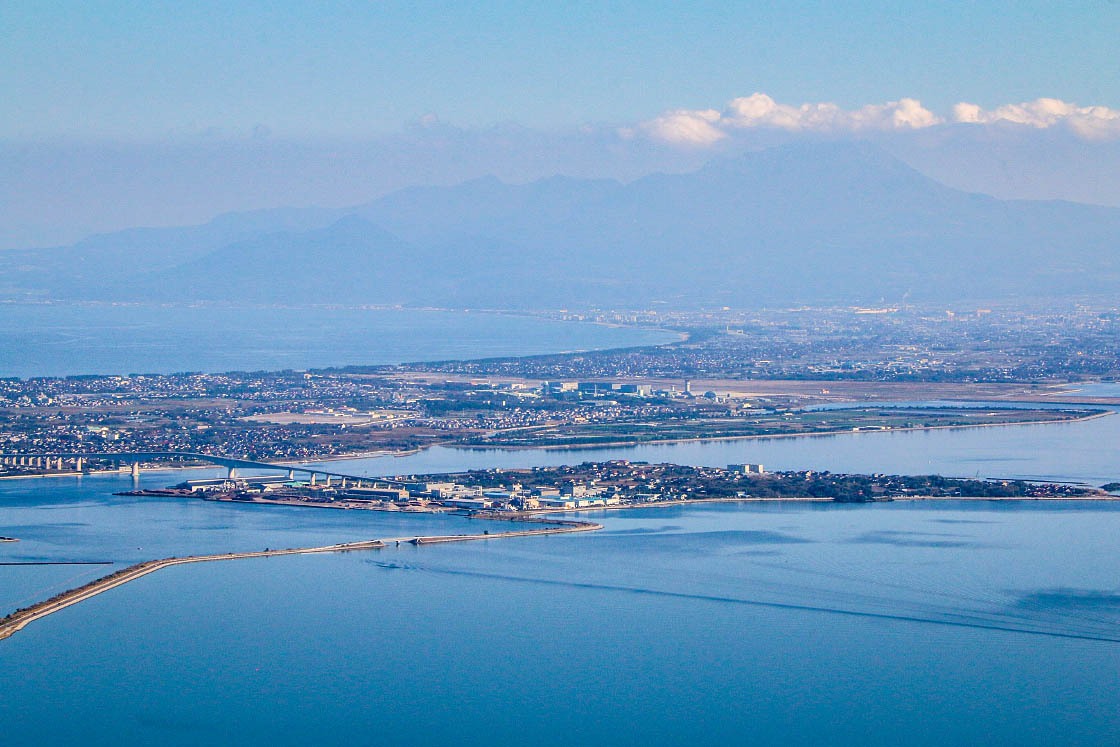
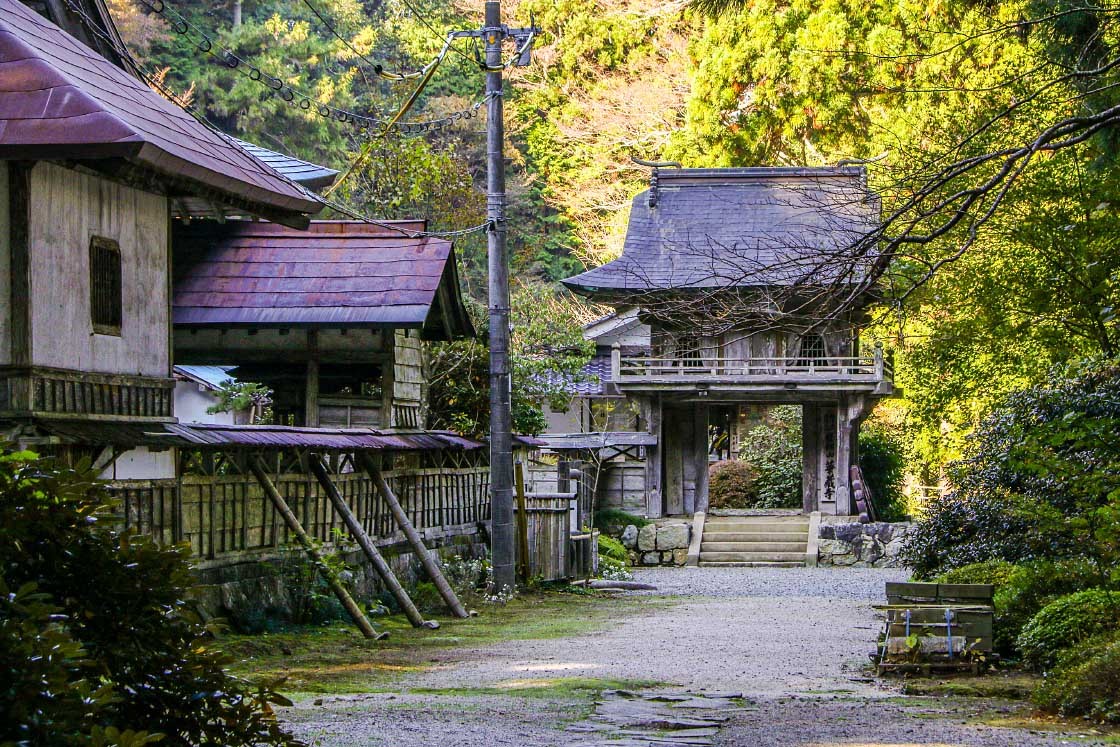
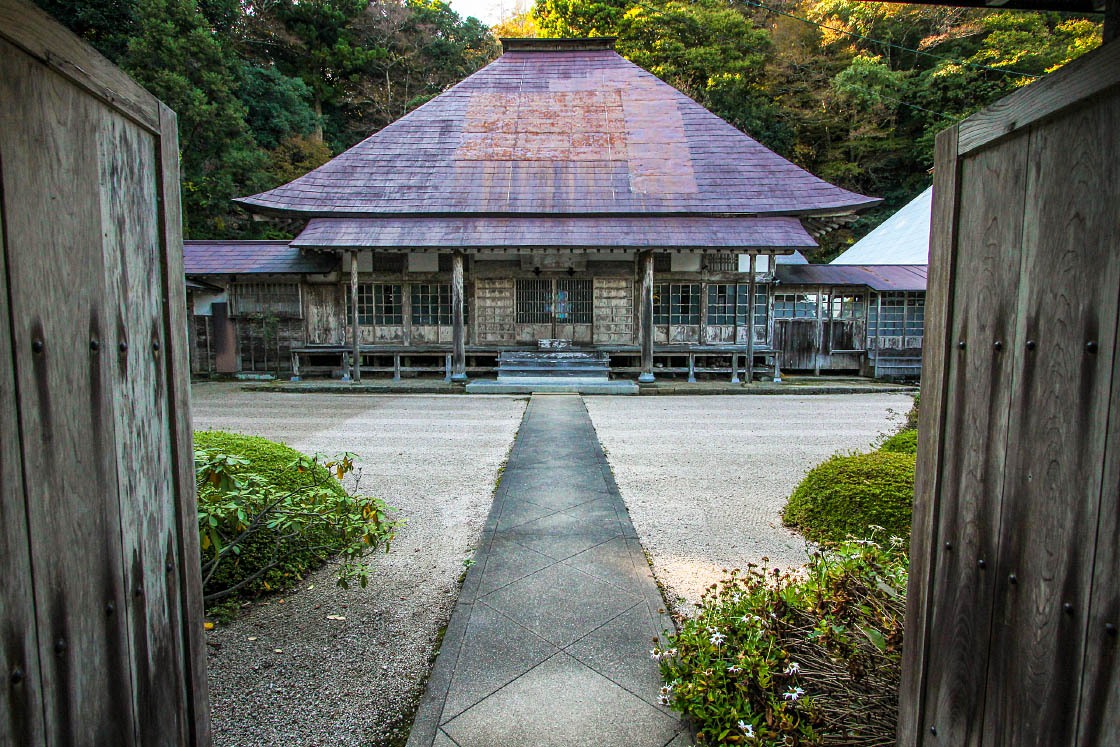
As the sun was getting lower in the sky, it was time for me to make my next big move. I headed down the mountain and to a tiny port called Shichirui, the launch point for the Jetfoil Rainbow Jet, the fastest ship bound for the Oki Islands.
The jetfoil, as well as a slower ferry, also depart from Sakaiminato depending on the season (be sure to check the timetables before traveling as services and times vary considerably by season).
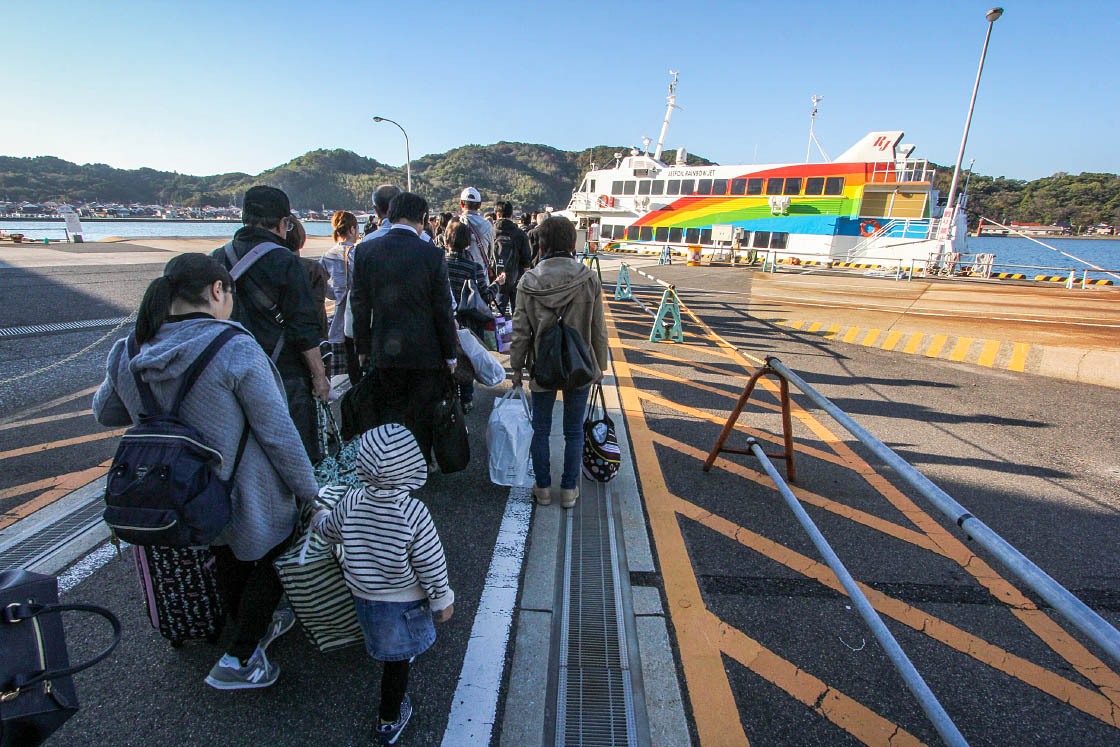
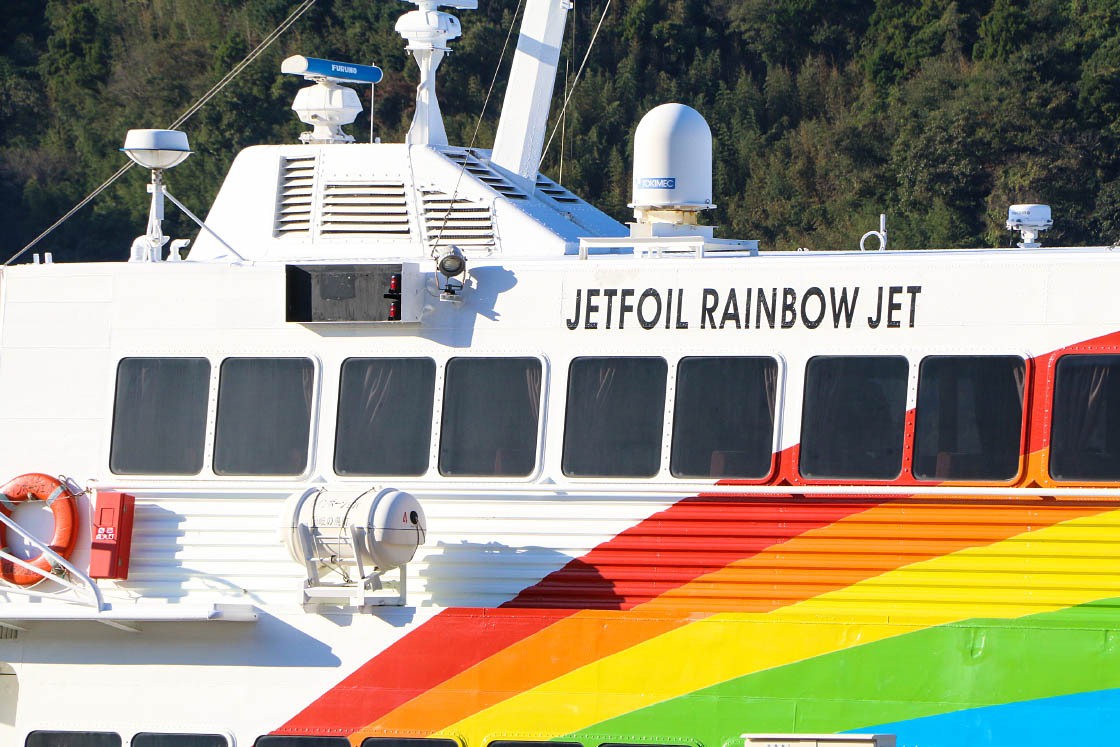
After about a two-hour journey, the fast ship finally arrived at my destination for the second day of my journey: Nishinoshima Island.
After docking at Beppu Port, it was just a short walk to my inn for the night, Mitsukejima-so Ryokan. I arrived just as the stars were coming out. Hungry from a long day, I was delighted to find a feast laid out for my kaiseki ryori dinner, including fresh oysters, local fish and Oki wagyu beef - a pretty great way to end my first day.
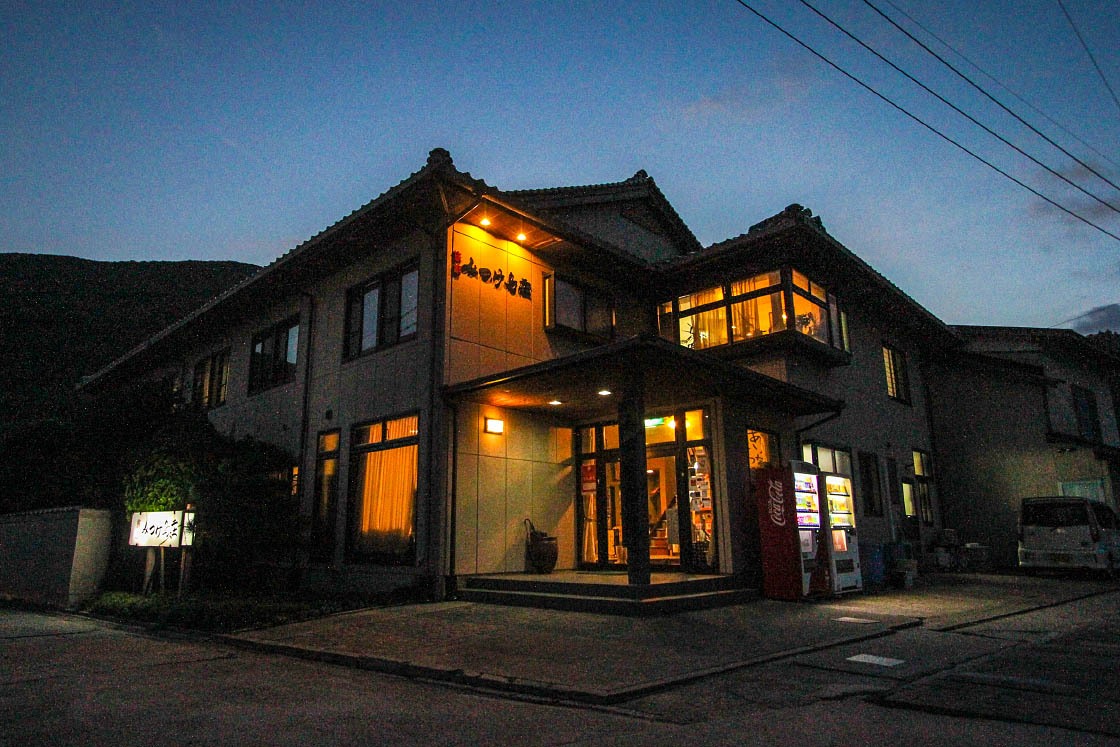
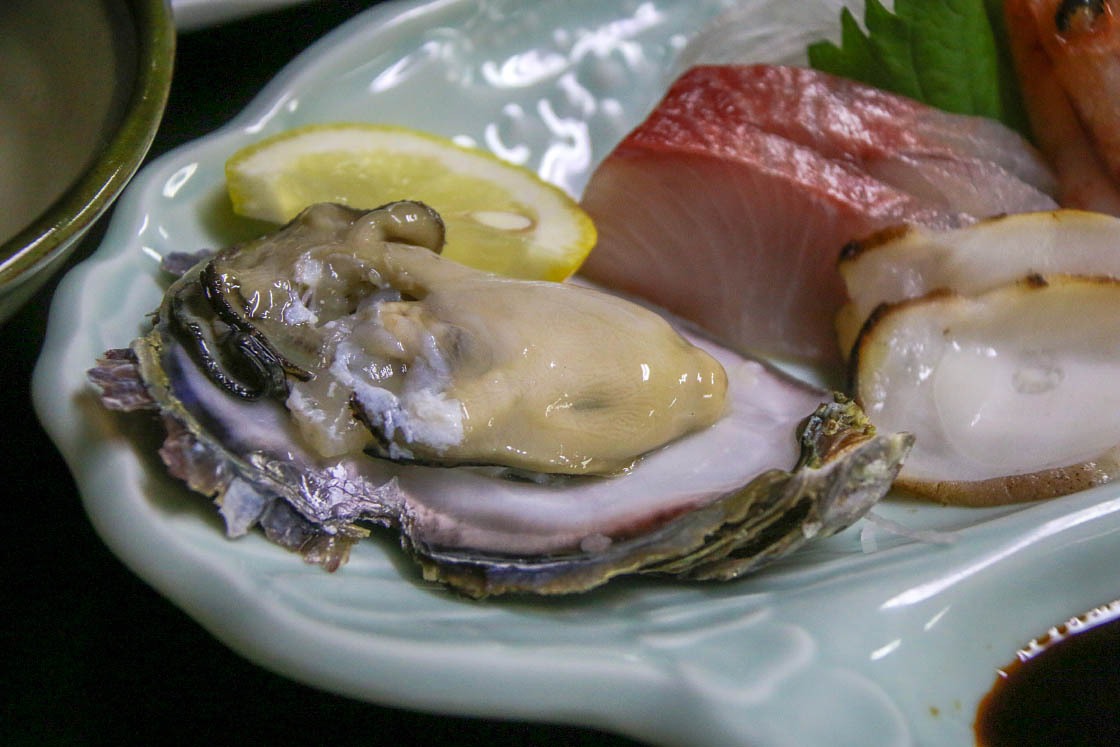
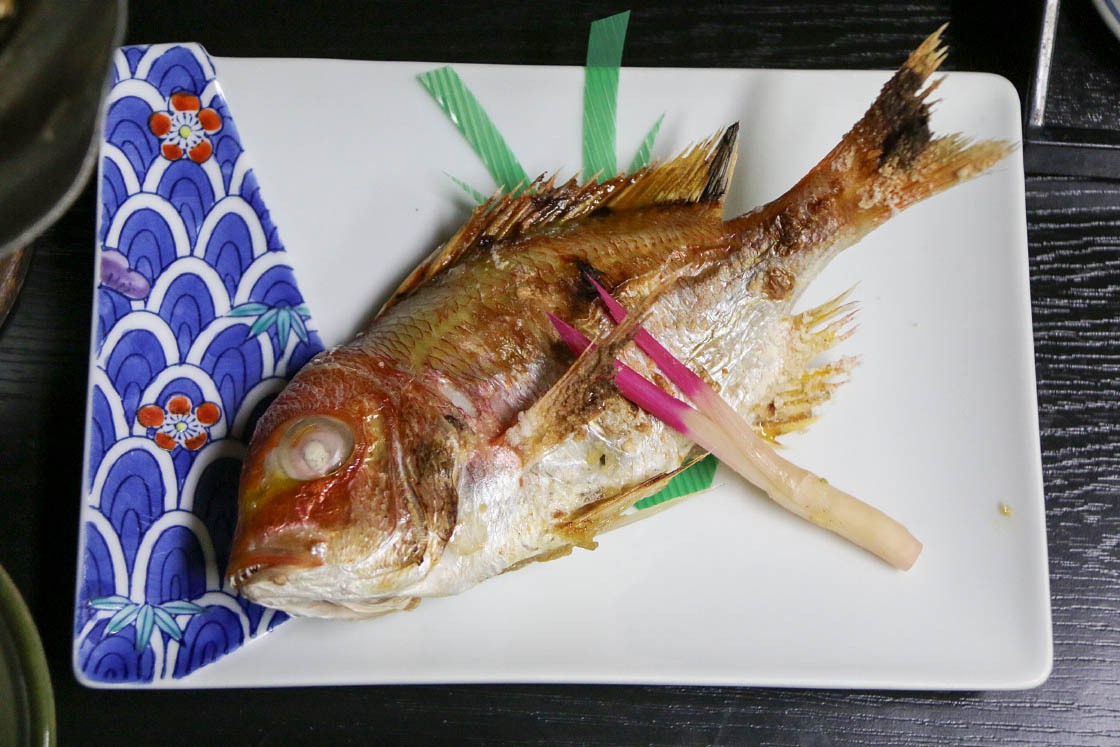
Day 2: Oki Islands
I started my second day by quickly picking up another rental car near the ferry terminal and headed straight to the coast.
The west coast, to be specific, known as the Kuniga Coast, is perhaps the crown jewel of the Oki Islands. Here, Nishinoshima's tall mountains on this side of the island plummet dramatically into an array of steep cliffs that stretches for several kilometers into the crashing waves of the Sea of Japan. These exposed cliffs show off a gorgeous display of colorful rock, turquoise ocean water and bright green pasture land complete with dozens of grazing cows and horses dotted along the landscape.
The scenery here is unforgettable.
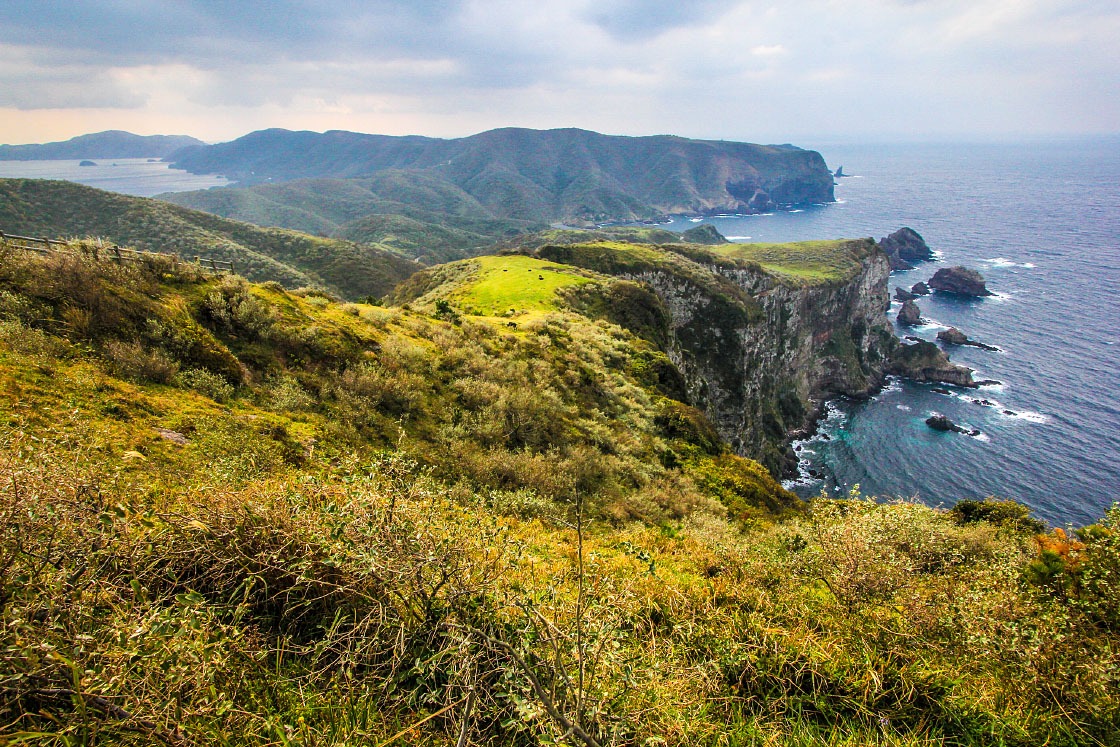
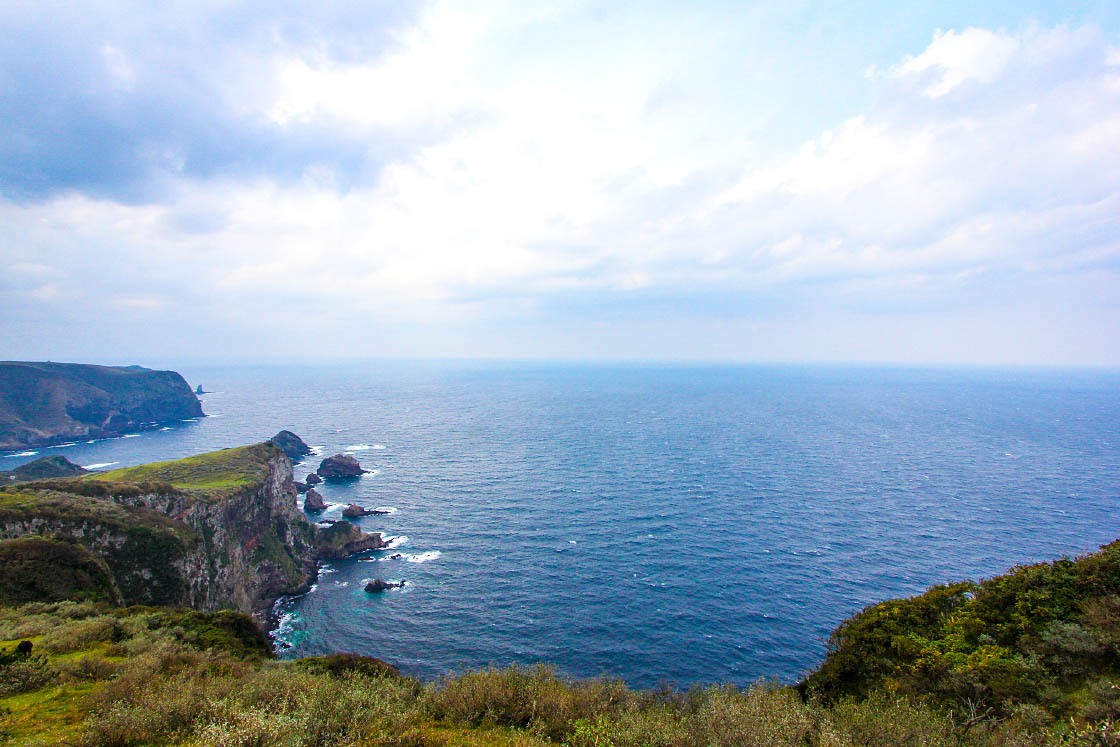
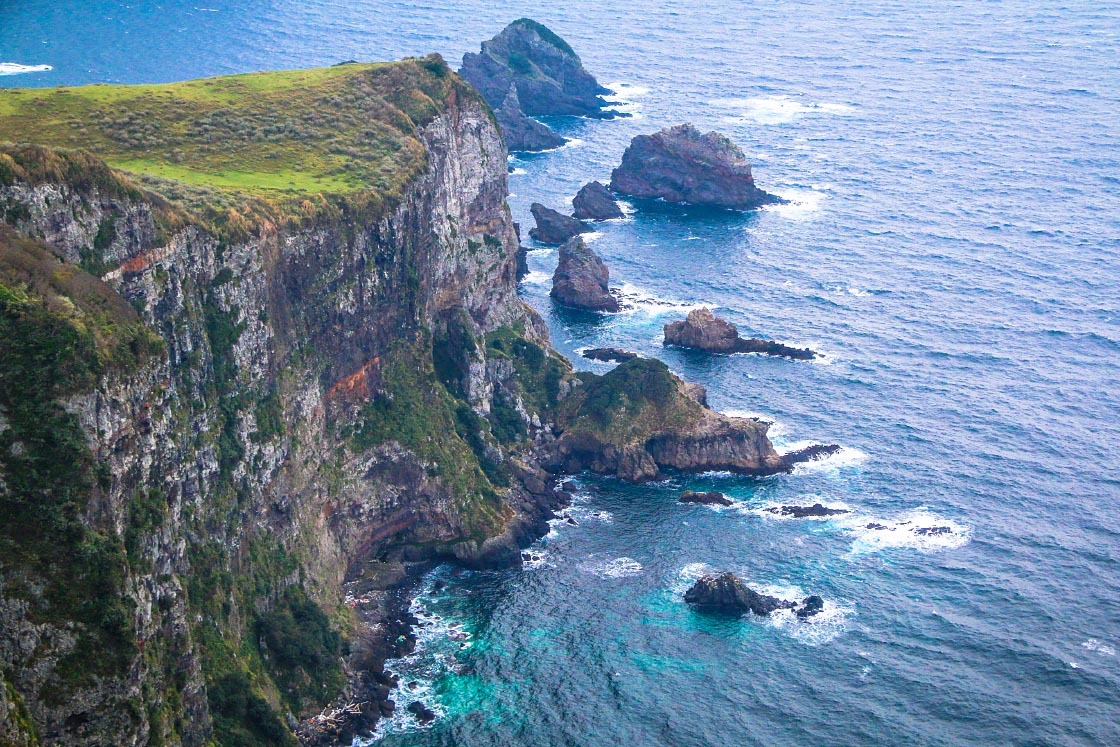

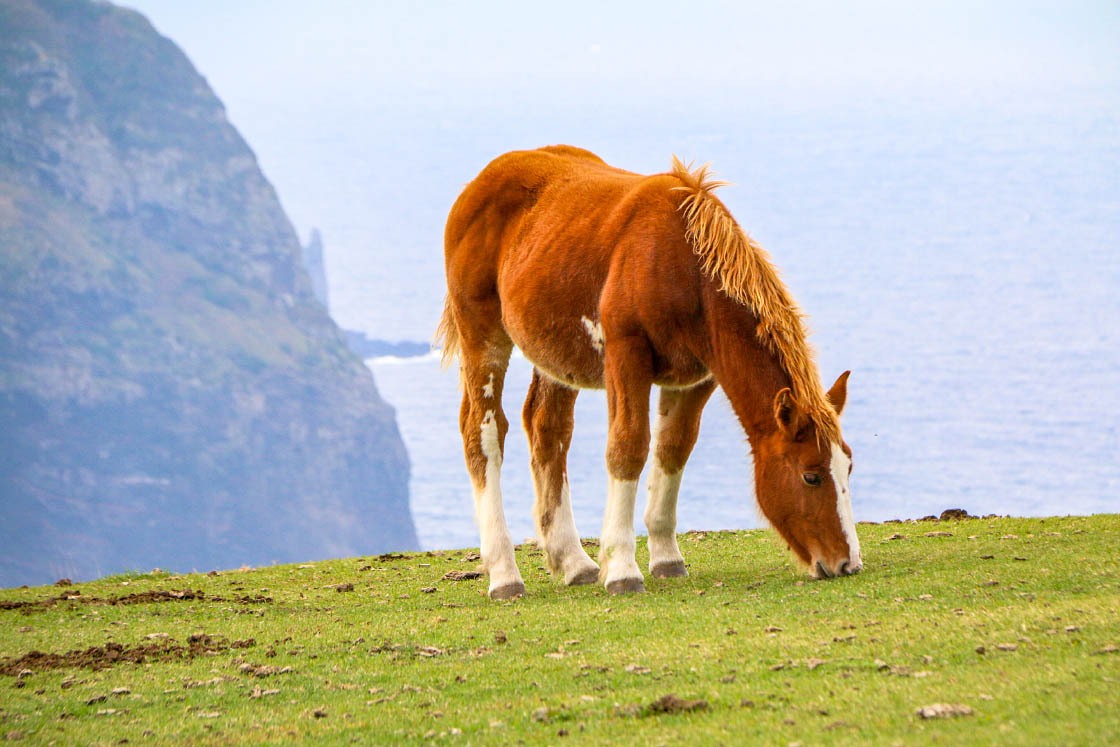
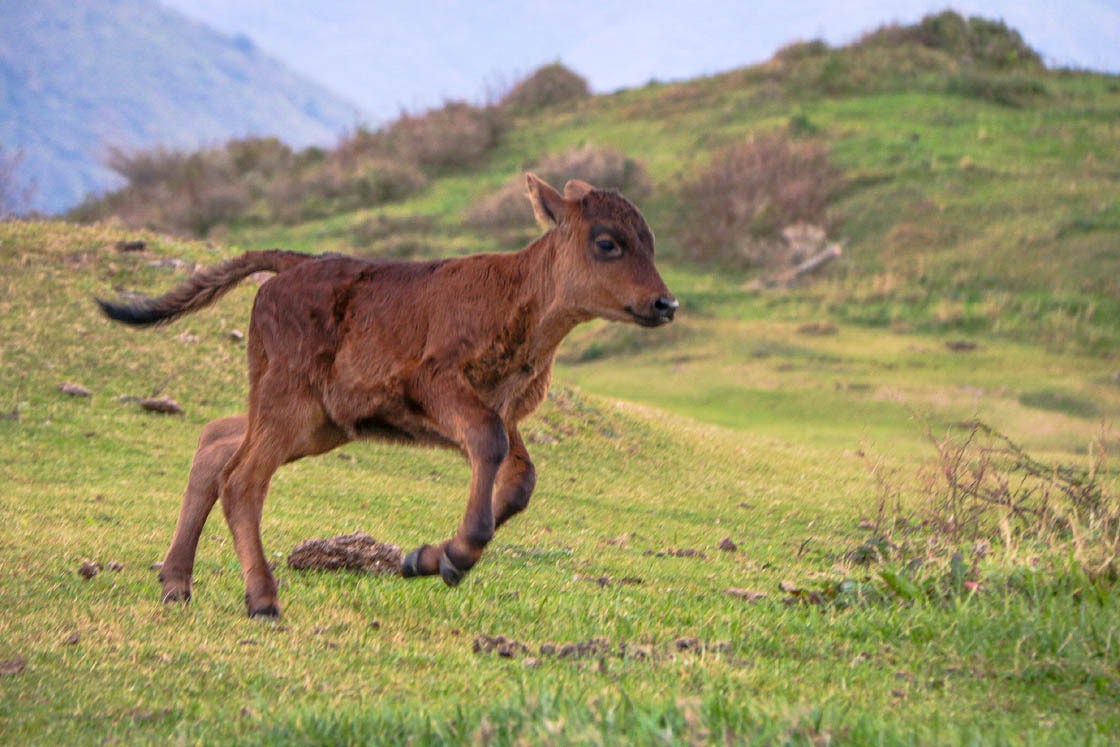
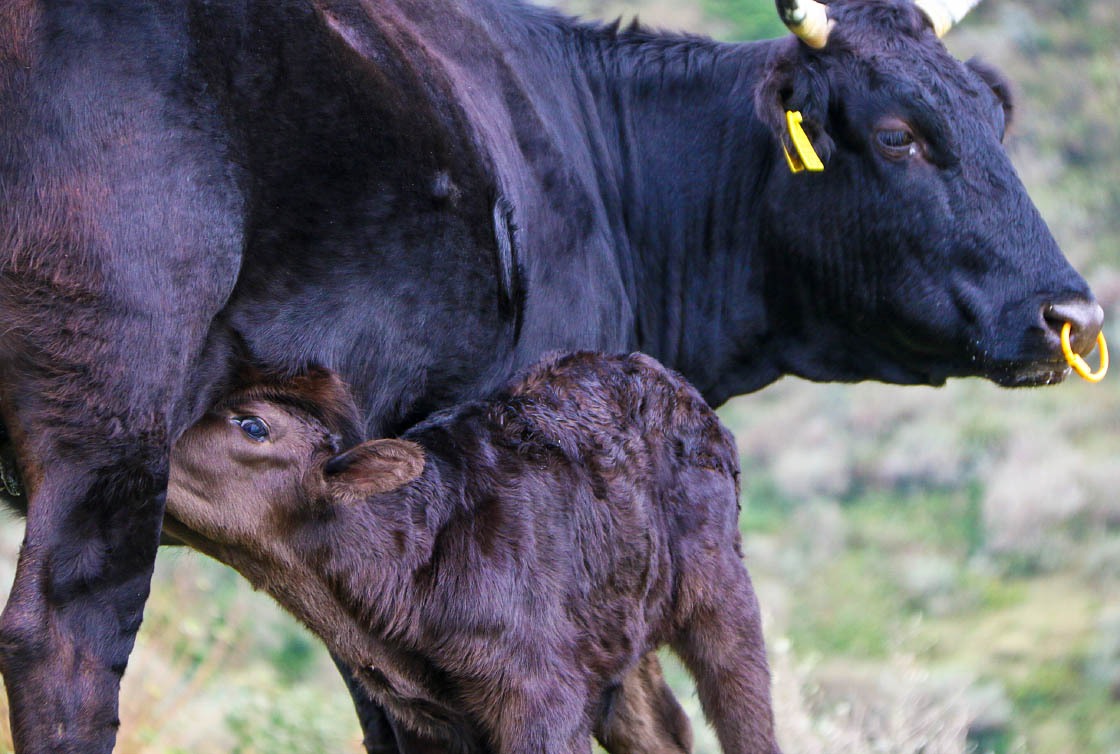
For the highest vantage point of the coastline, my first stop was to the top of the Matengai Cliff, an enormous cliff face with what seems like near 90-degree sheer pitch. From the top of the cliff, the views of the rest of the coastline are spectacular, but the cliff itself is, of course, unseeable. So, I hiked down the cliffside over the sprawling pastures draped over the clifftops down to the ocean below.
The further I walked down, dodging grazing animals as I went, the more of the profile of Matengai became visible. Though I knew the walk back up would be tough, the new perspectives were worth it.
At sea level, another feature became visible: the graceful Tsutenkyo Arch, surrounded by a gallery of jagged rock formations bursting out of the water.
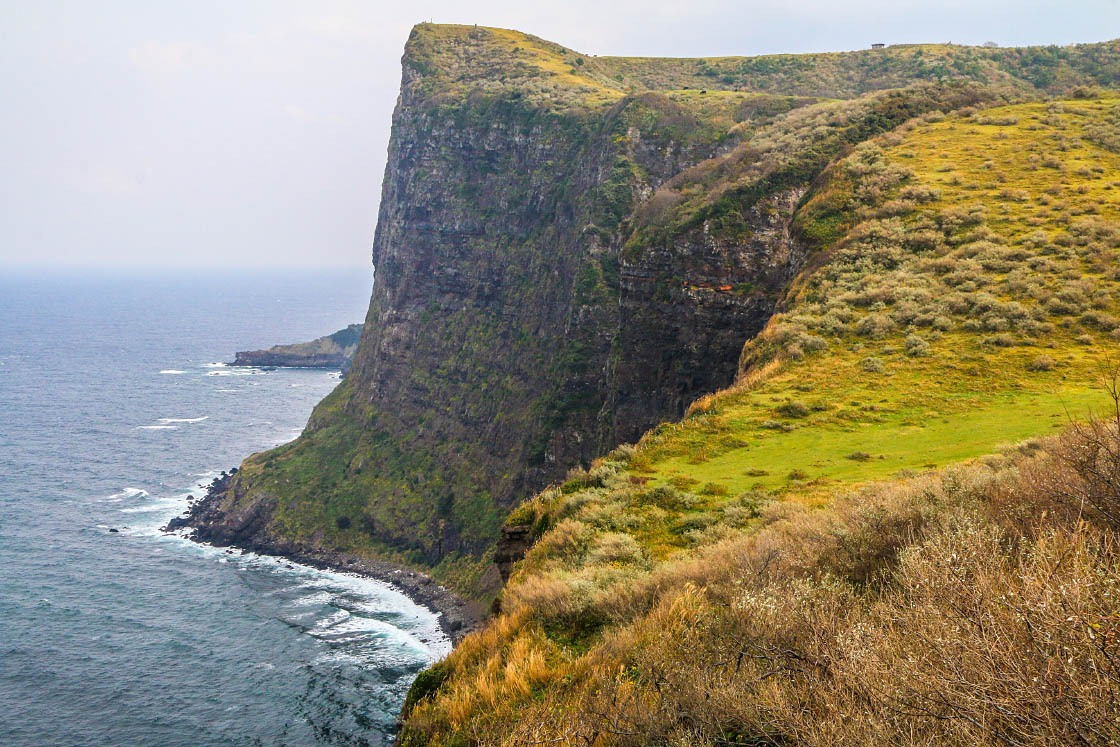
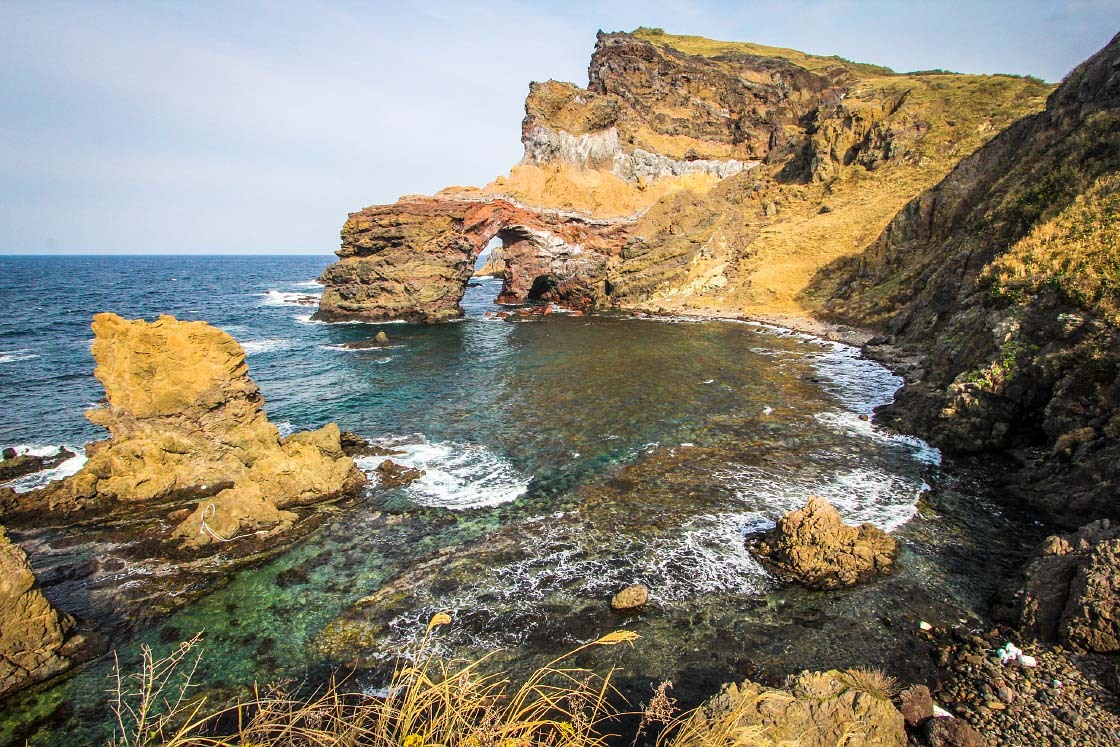
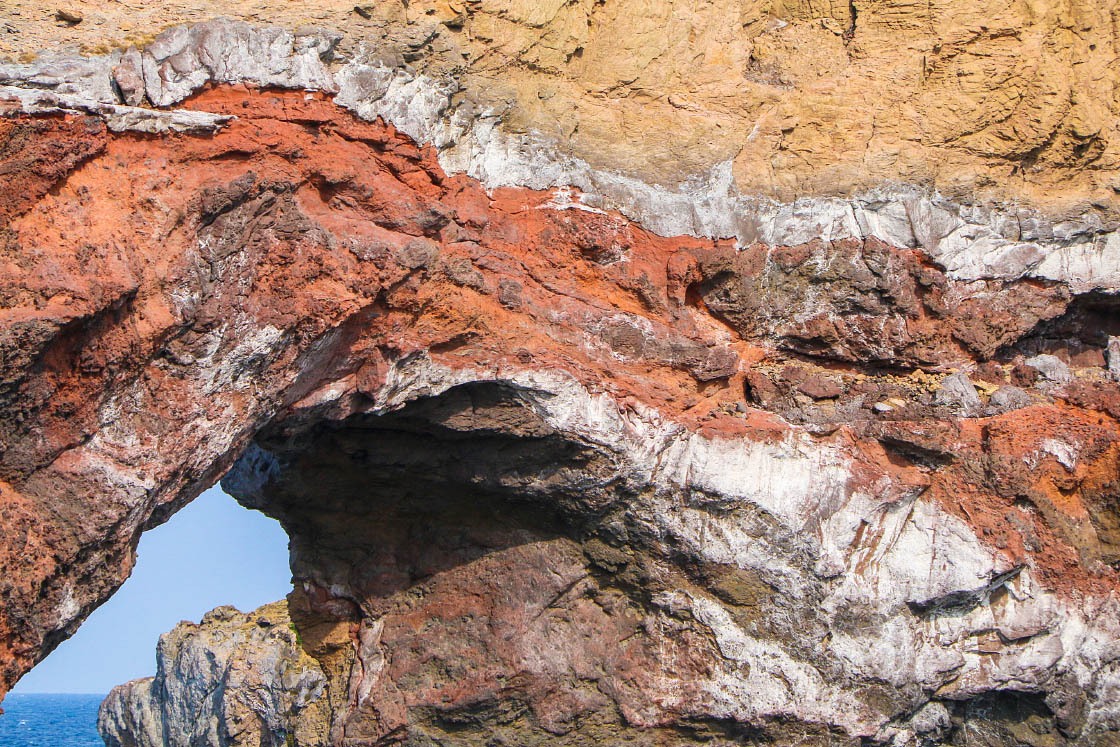
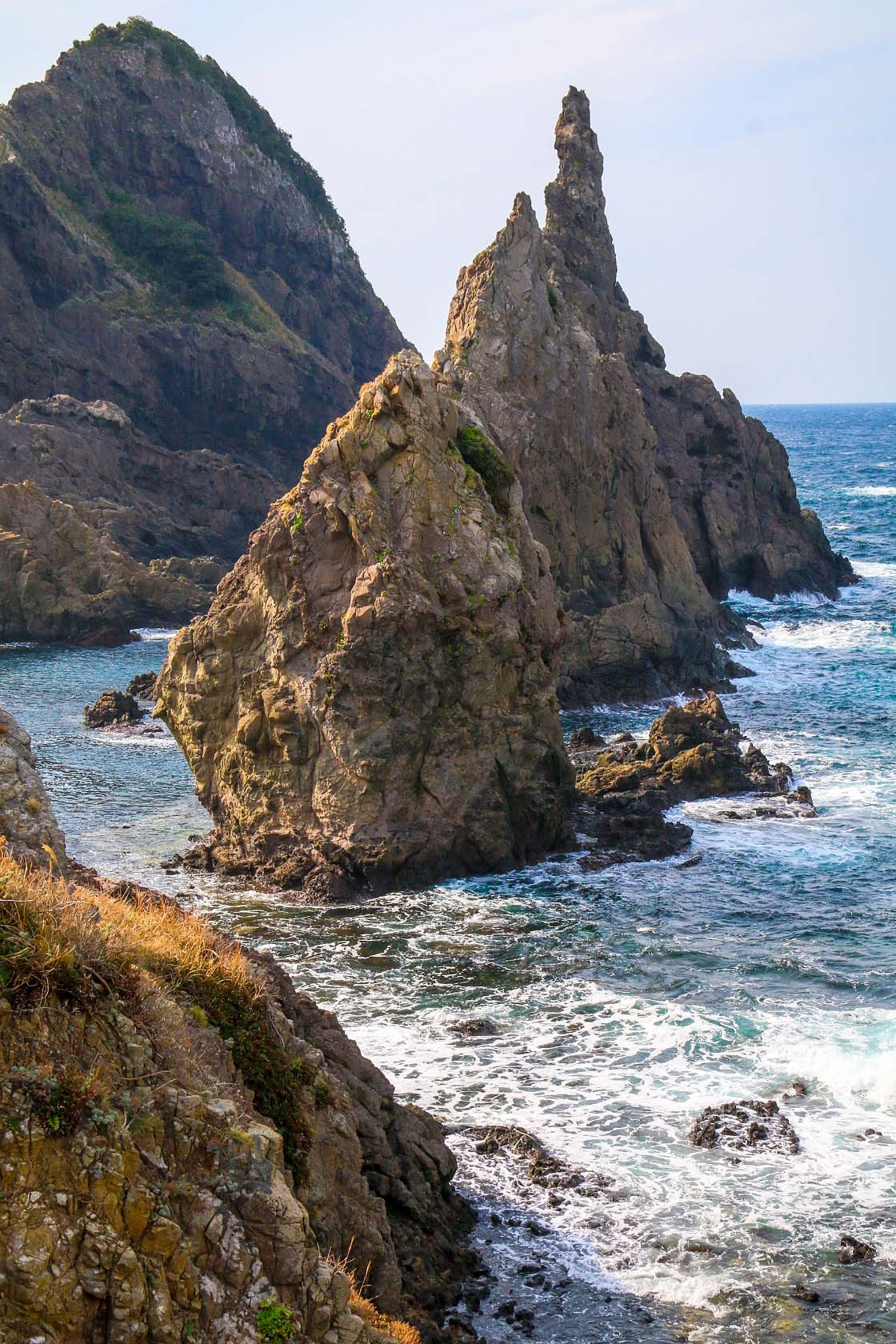
The simple pleasure of exploring this very sparsely populated island was a unique experience for me. While the handful of tiny towns dotting the island were't unsimilar to others in Japan, as I drove along the ridge lines of the mountains on this island, the sea around me in every direction, seeing hardly any other human beings, I couldn't help but feel like I was the only person there.
My final spot to visit was the Onimai Lookout, on the southern tip of Nishinoshima Island. While the Kuniga area overlooks sweeping rocky shores, this place afforded views of the Oki Islands themselves. Every island in the western cluster of the Oki Islands, known as the Dozen, was visible from this grass-covered hill.
With no one else for kilometers, surrounded by ocean and islands, I was grateful for this chance to appreciate this special place.
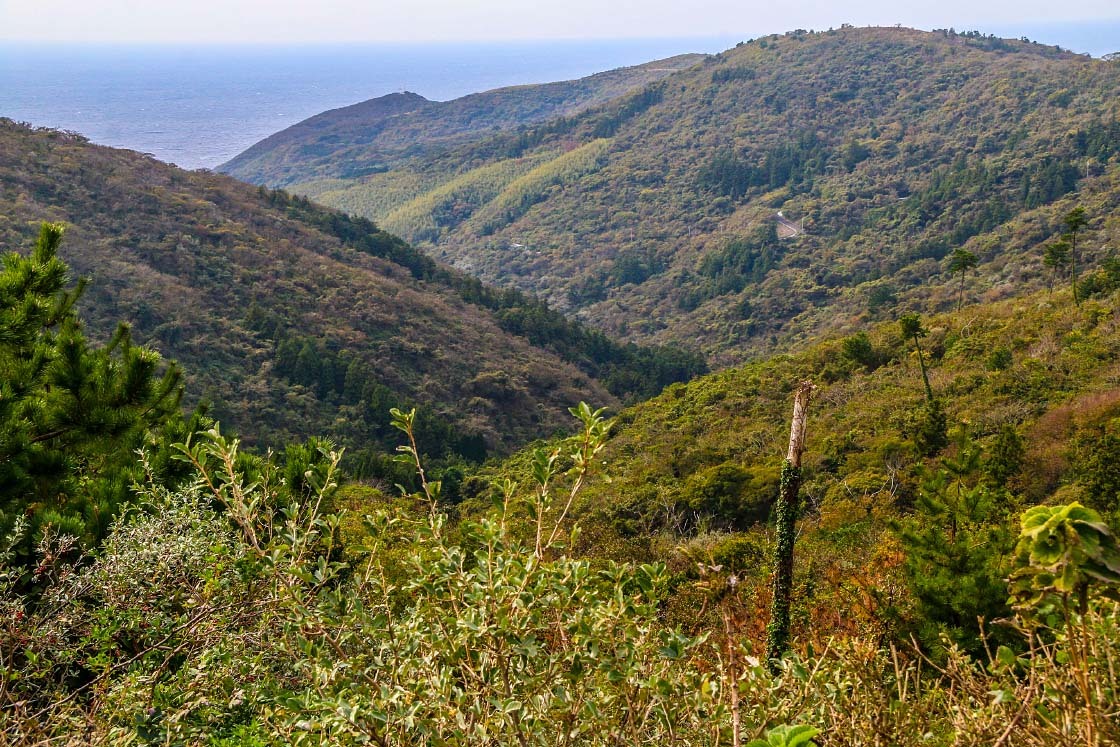
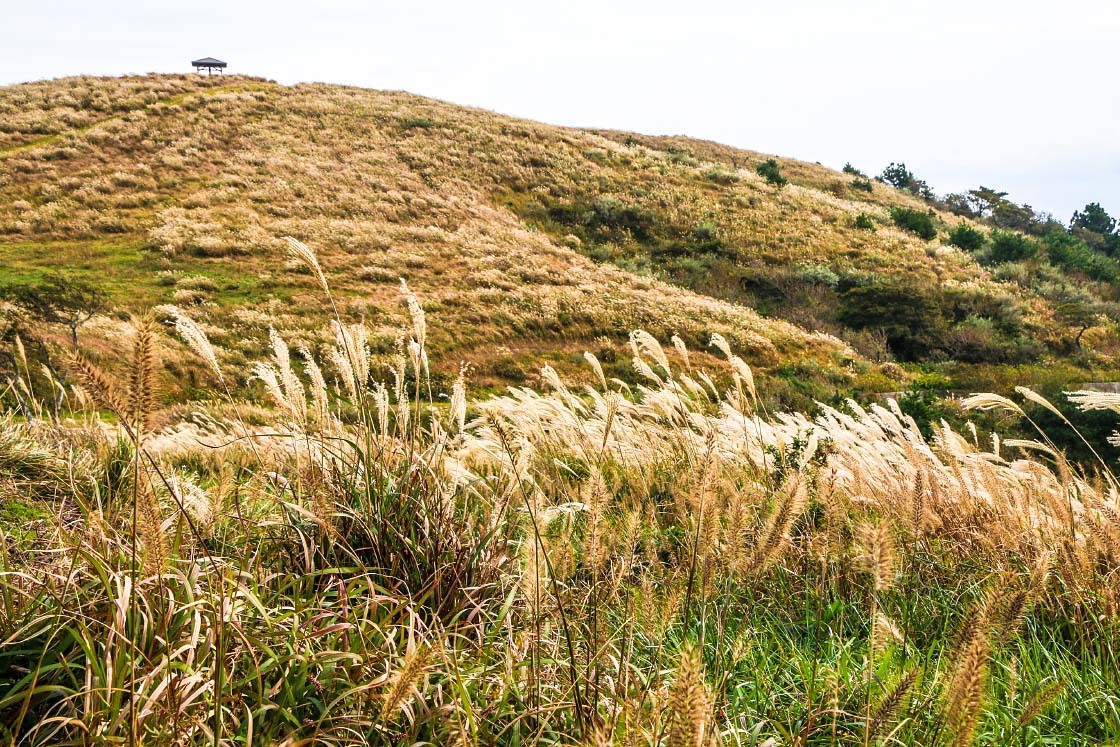
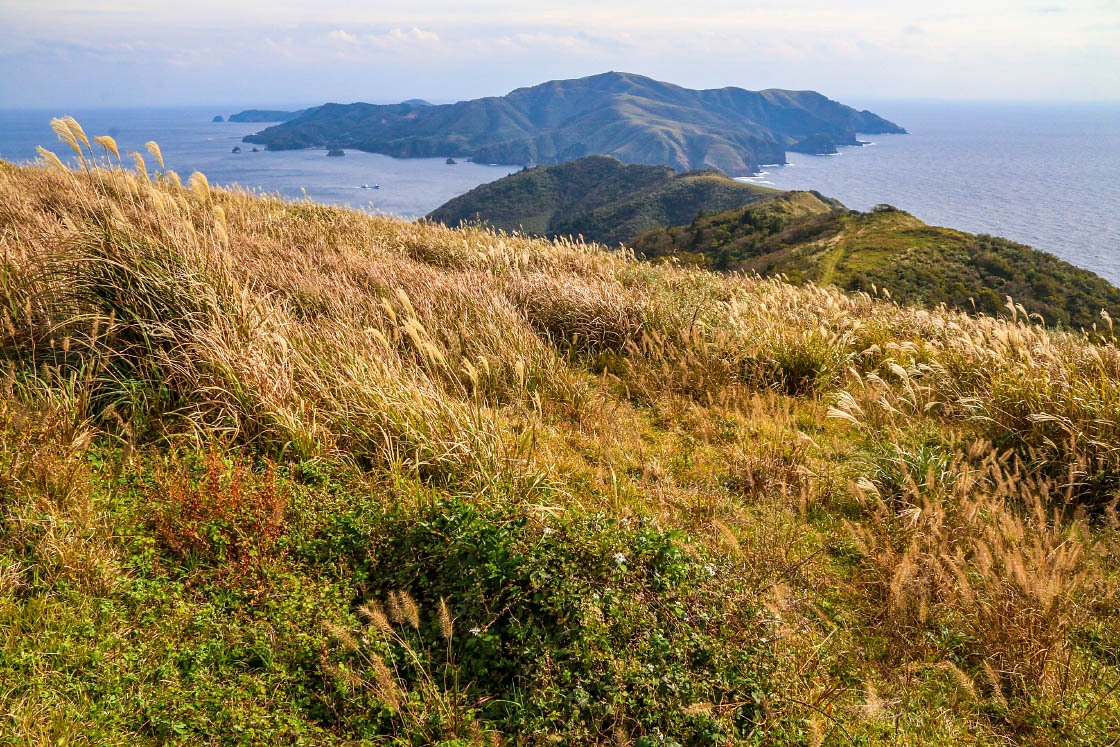
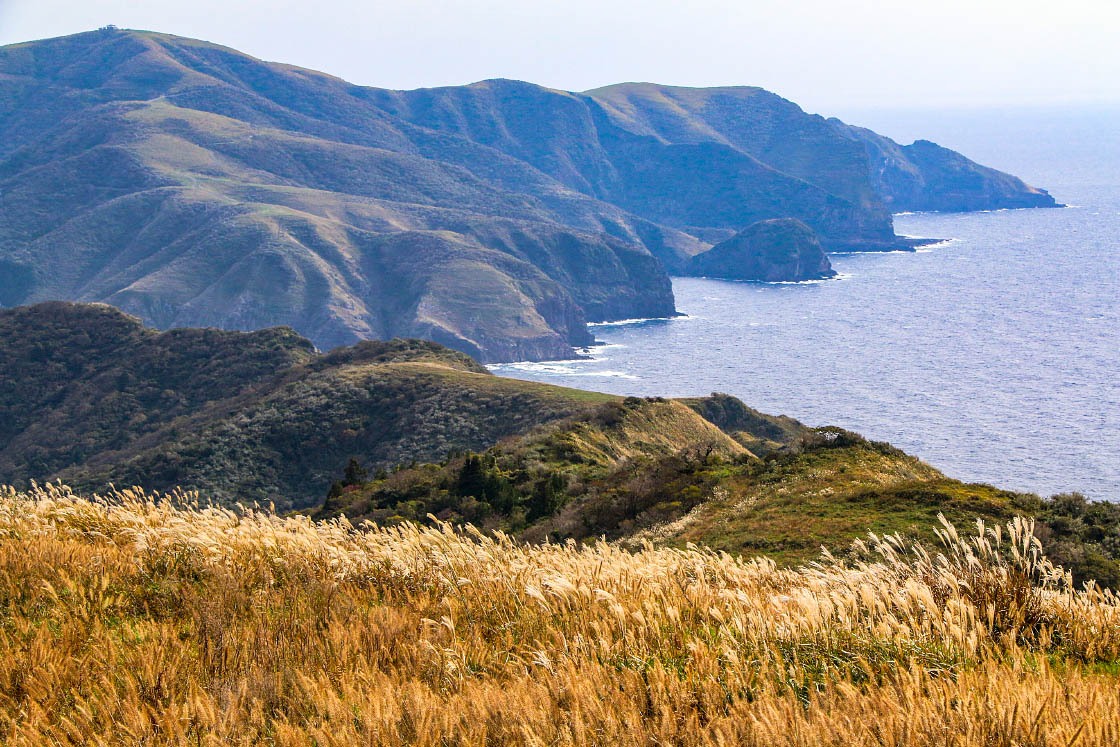
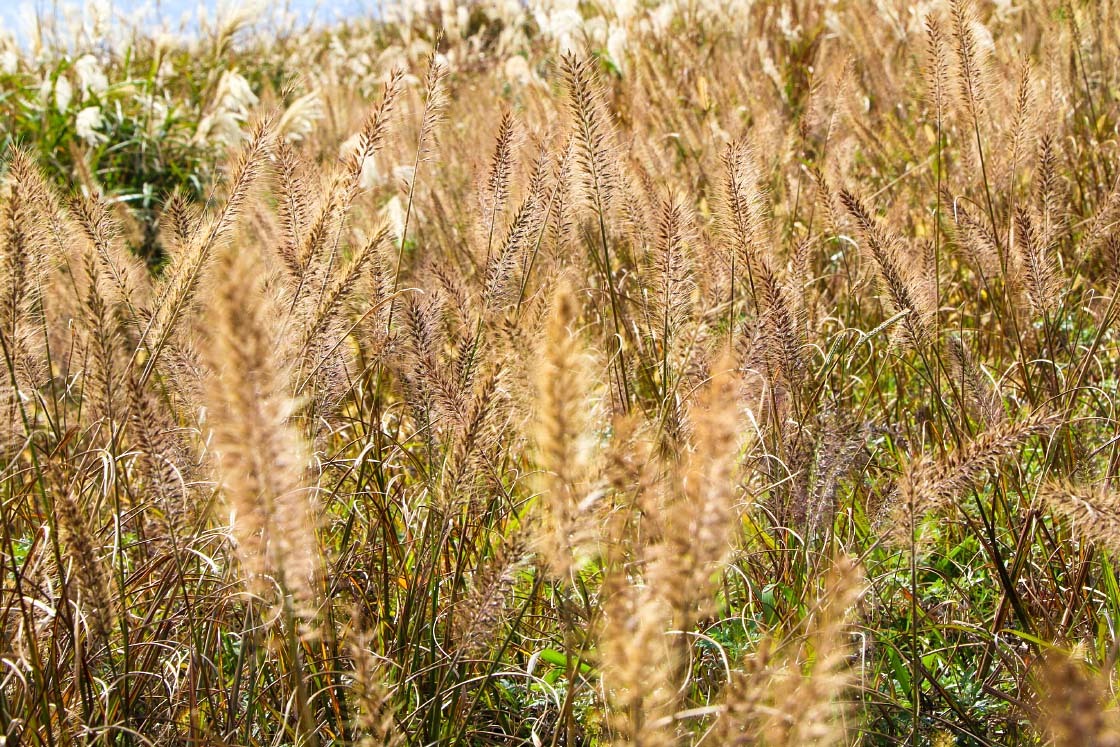
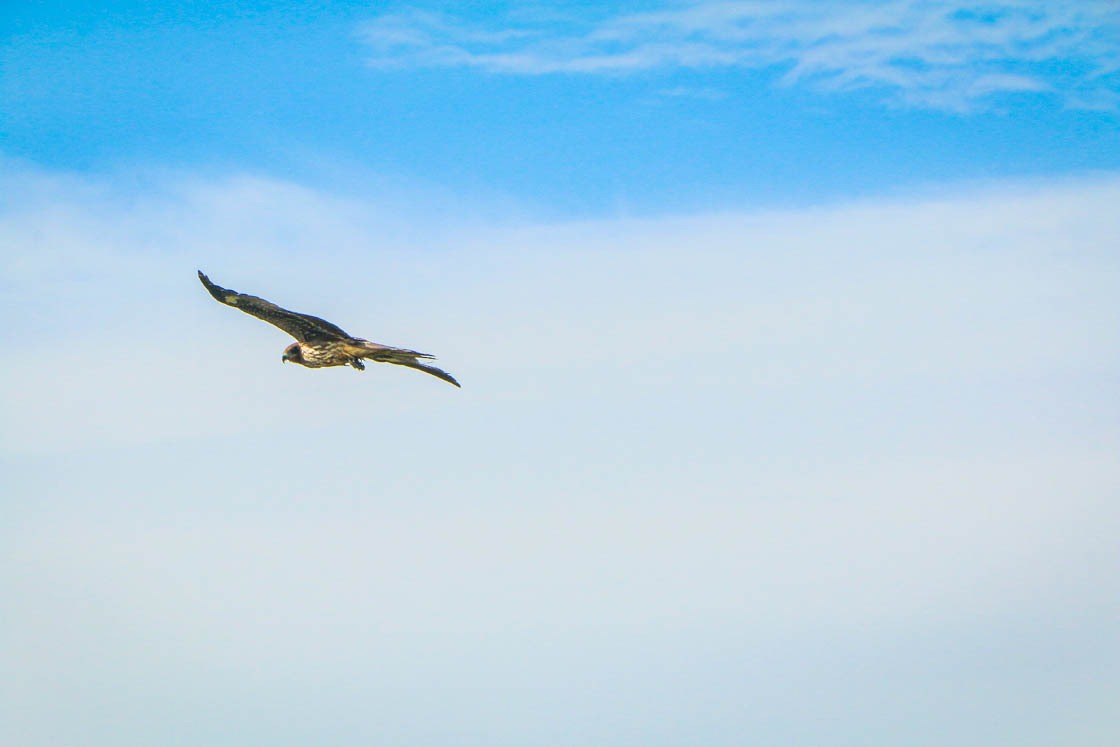
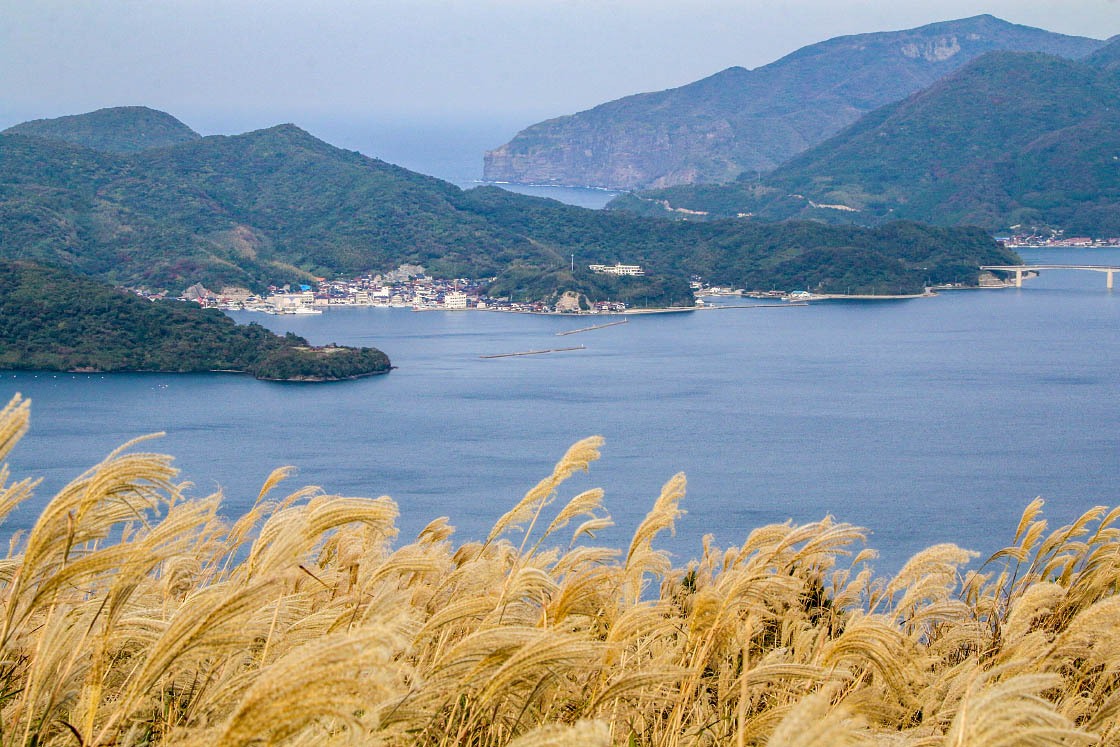
Discover more
- Learn more about Daisen-Oki National Park →
- Learn more about the National Parks of Japan →
- Learn more about Tottori Prefecture →
- Learn more about Shimane Prefecture →

